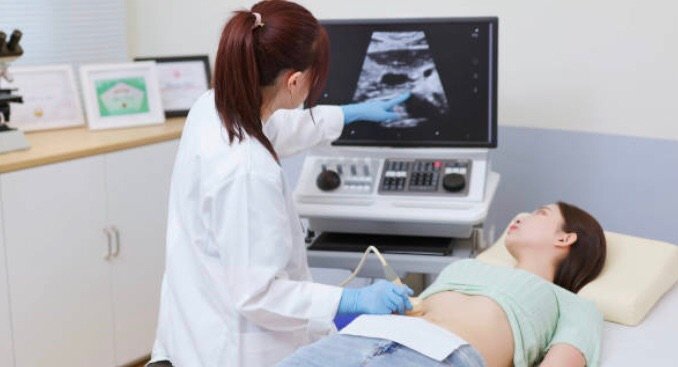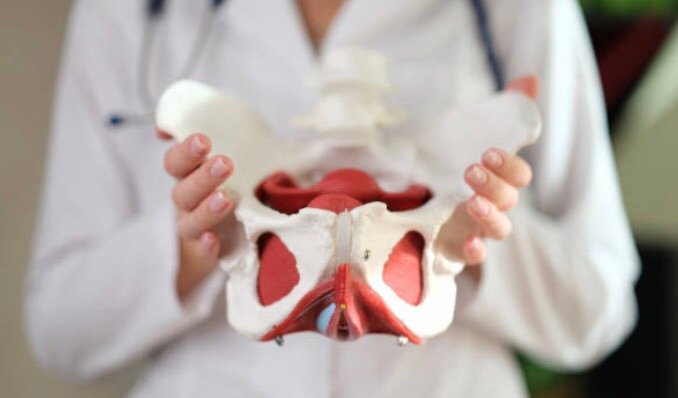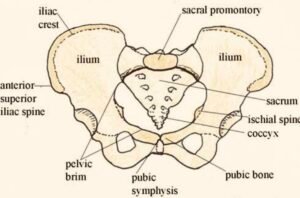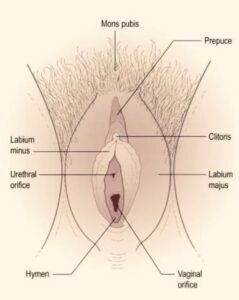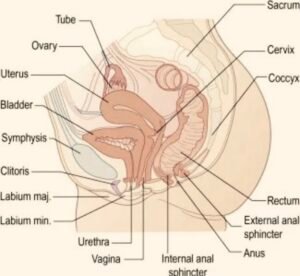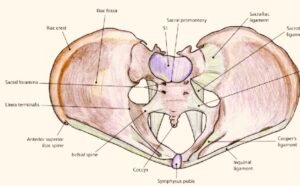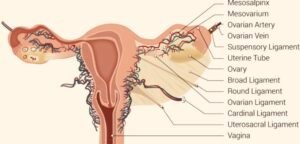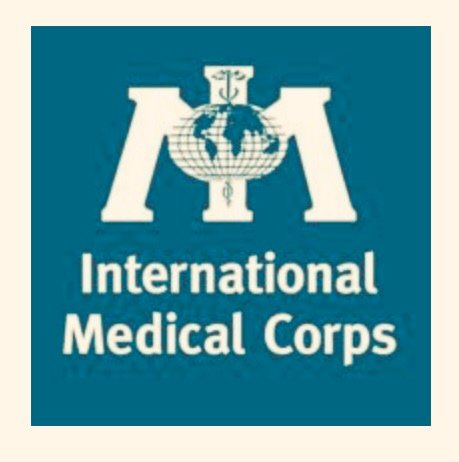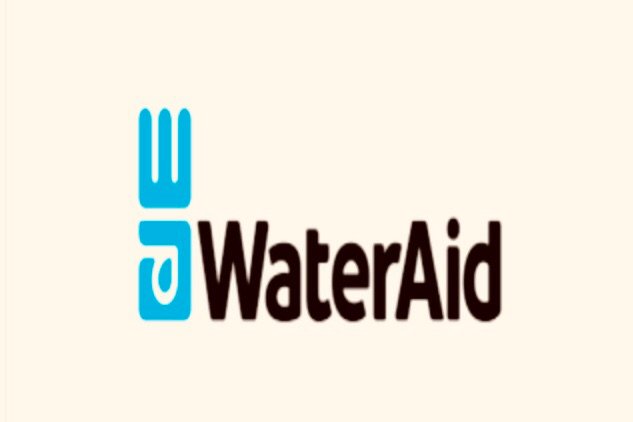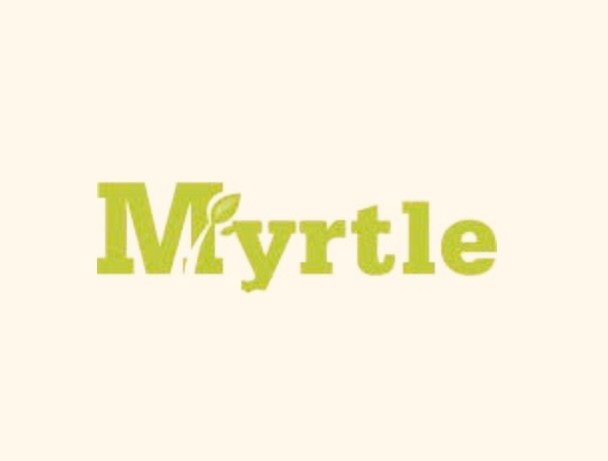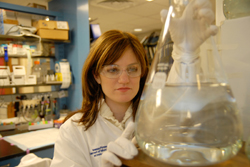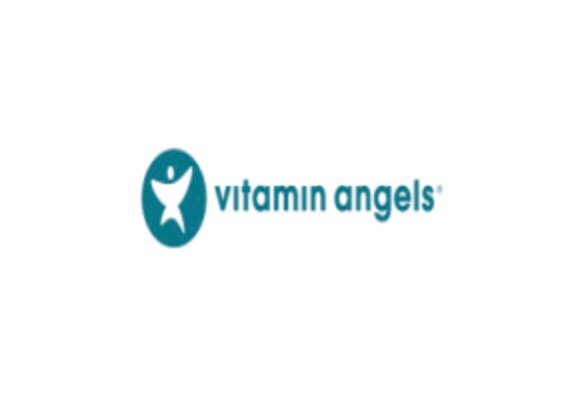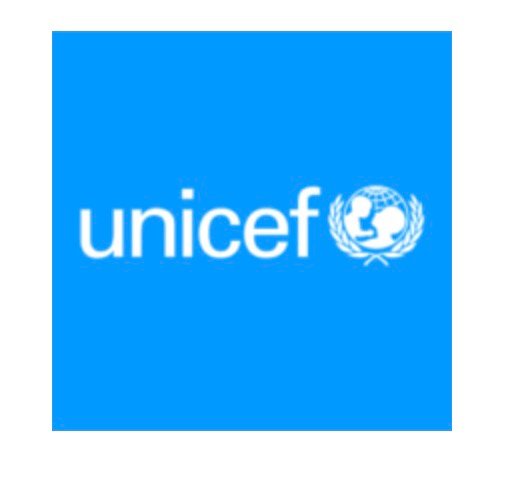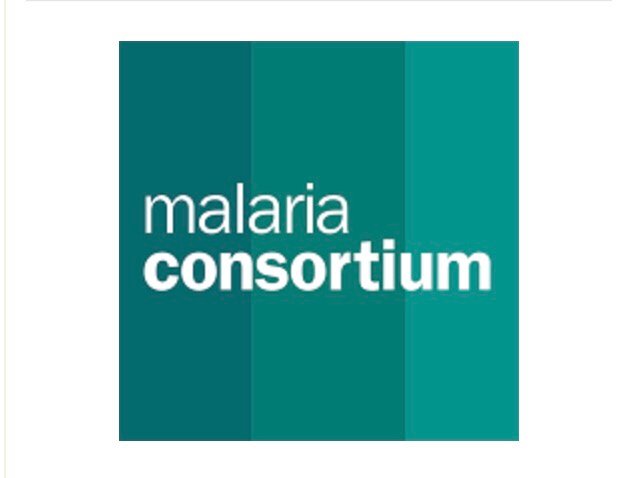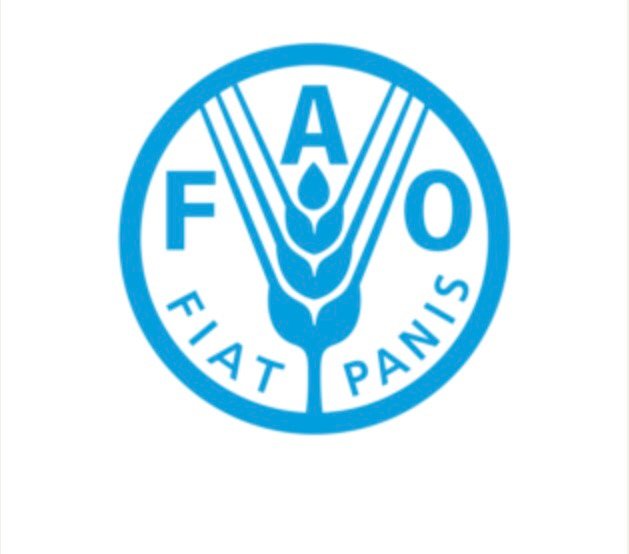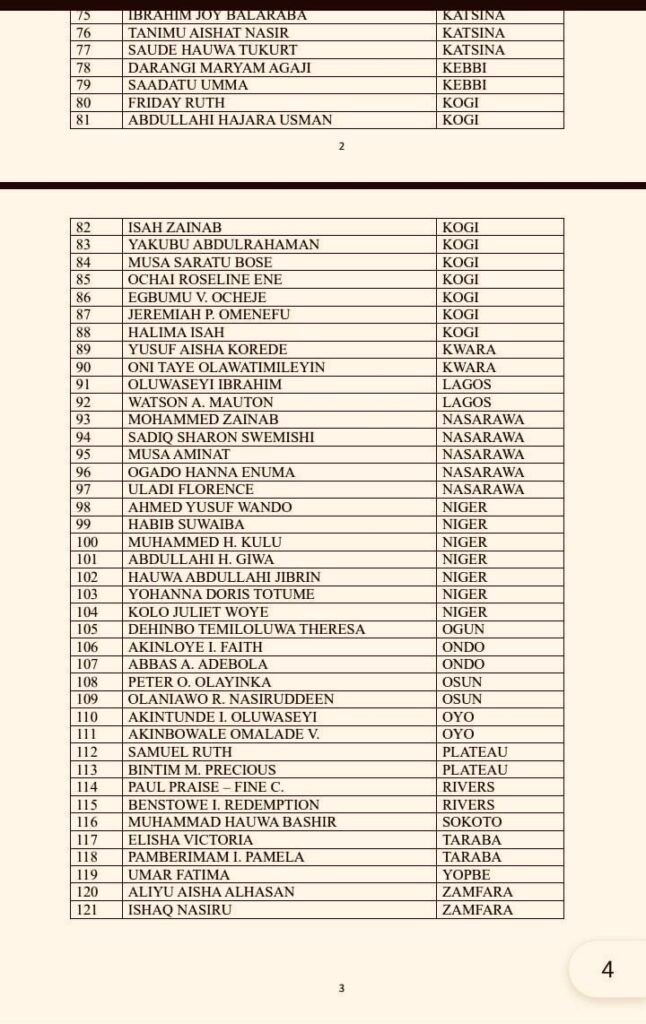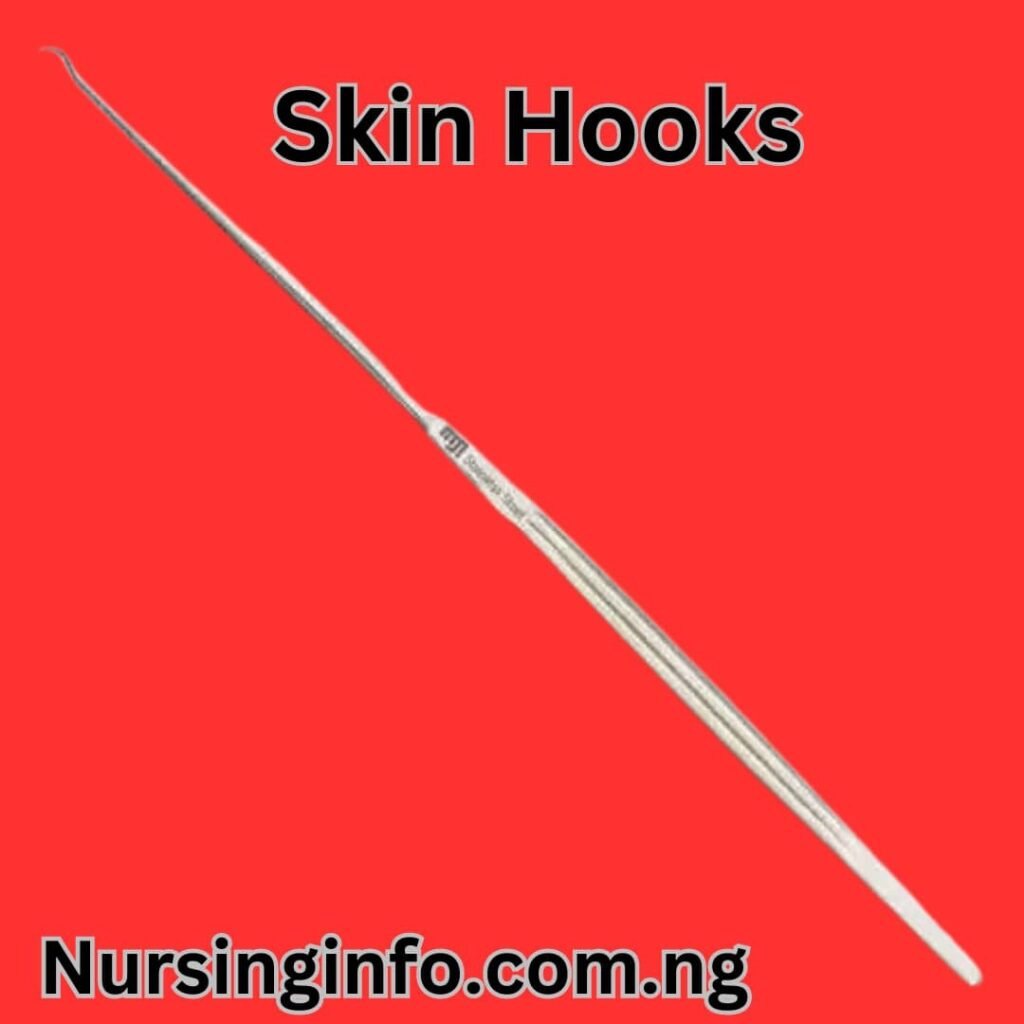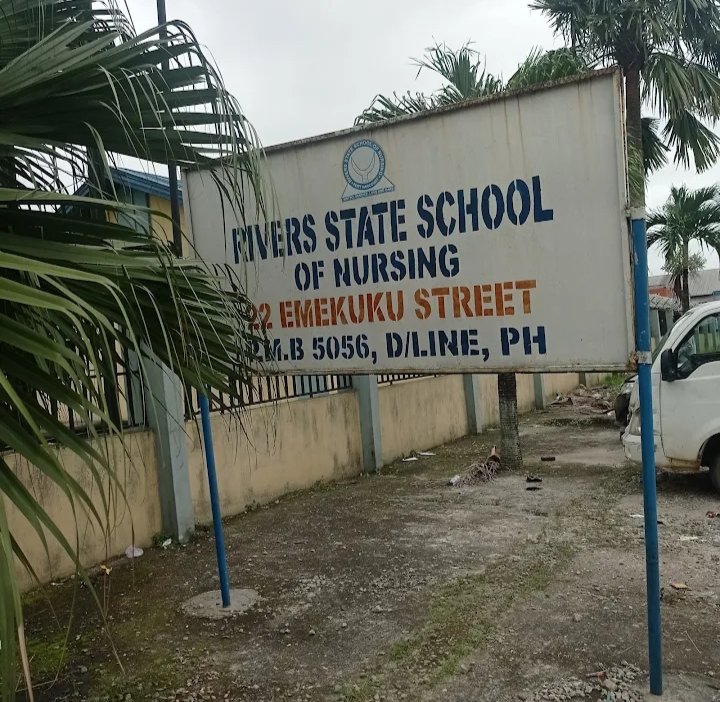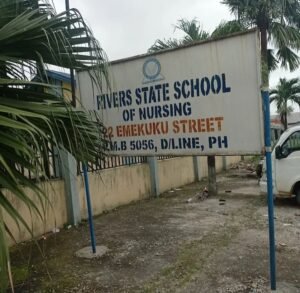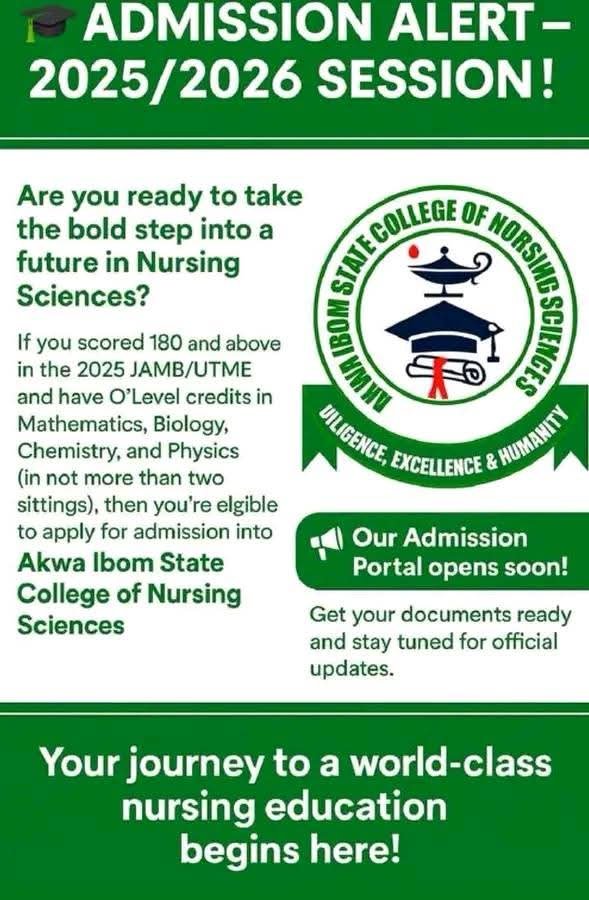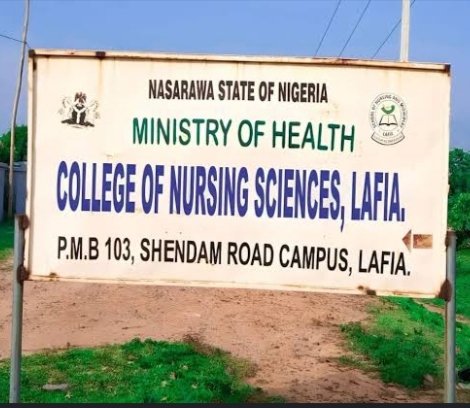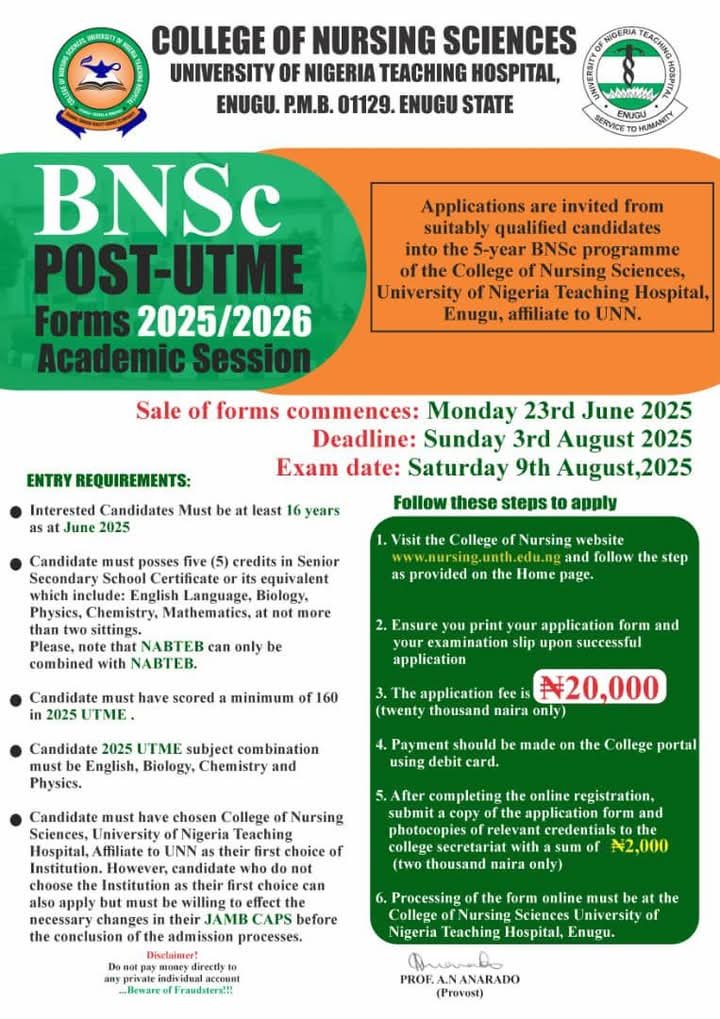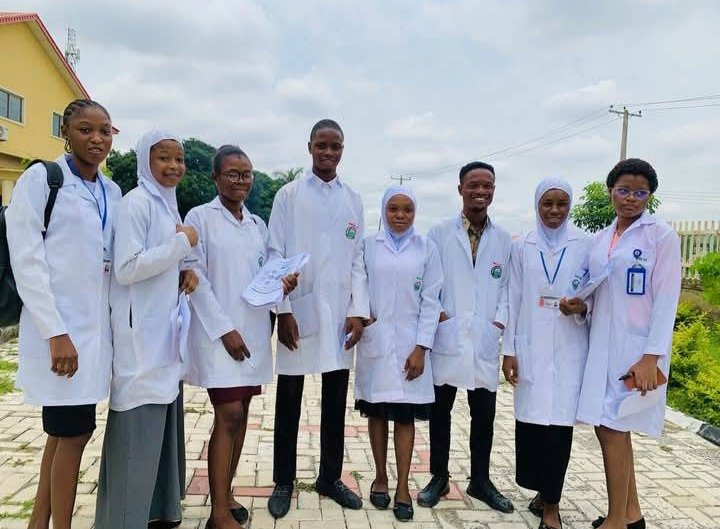SECTION 1
1. Question
Aminophylline (theophylline) is prescribed for a client with acute bronchitis. A nurse administers the medication, knowing that the primary action of this medication is to:
A. Promote expectoration.
B. Suppress the cough.
C. Relax smooth muscles of the bronchial airway.
D. Prevent infection.
Incorrect
Correct Answer: C. Relax smooth muscles of the bronchial airway.
2. Question
A client is receiving isoetharine hydrochloride (Bronkosol) via a nebulizer. The nurse monitors the client for which side effect of this medication?
A. Constipation
B. Diarrhea
C. Bradycardia
D. Tachycardia
Correct
Correct Answer: D. Tachycardia
3. Question
A nurse teaches a client about the use of a respiratory inhaler. Which action by the client indicated a need for further teaching?
A. Removes the cap and shakes the inhaler well before use.
B. Press the canister down with your finger as he breathes in.
C. Inhales the mist and quickly exhales.
D. Waits 1 to 2 minutes between puffs if more than one puff has been prescribed.
Incorrect
Correct Answer: C. Inhales the mist and quickly exhales.
4. Question
A female client is scheduled to have a chest radiograph. Which of the following questions is of most importance to the nurse assessing this client?
A. “Is there any possibility that you could be pregnant?”
B. “Are you wearing any metal chains or jewelry?”
C. “Can you hold your breath easily?”
D. “Are you able to hold your arms above your head?”
Incorrect
Correct Answer: A. “Is there any possibility that you could be pregnant?”
5. Question
A client has just returned to a nursing unit following bronchoscopy. A nurse would implement which of the following nursing interventions for this client?
A. Encouraging additional fluids for the next 24 hours
B. Ensuring the return of the gag reflex before offering foods or fluids
C. Administering atropine intravenously
D. Administering small doses of midazolam (Versed).
Incorrect
Correct Answer: B. Ensuring the return of the gag reflex before offering foods or fluids
6. Question
A client has an order to have radial ABG drawn. Before drawing the sample, a nurse occludes the:
A. Brachial and radial arteries, and then releases them and observes the circulation of the hand.
B. Radial and ulnar arteries, releases one, evaluates the color of the hand, and repeats the process with the other artery.
C. Radial artery and observes for color changes in the affected hand.
D. Ulnar artery and observes for color changes in the affected hand.
Incorrect
Correct Answer: B. Radial and ulnar arteries, releases one, evaluates the color of the hand, and repeats the process with the other artery.
7. Question
A nurse is assessing a client with chronic airflow limitation and notes that the client has a “barrel chest.” The nurse interprets that this client has which of the following forms of chronic airflow limitation?
A. Chronic obstructive bronchitis
B. Emphysema
C. Bronchial asthma
D. Bronchial asthma and bronchitis
Incorrect
Correct Answer: B. Emphysema
8. Question
A client has been taking benzonatate (Tessalon Perles) as prescribed. A nurse concludes that the medication is having the intended effect if the client experiences:
A. Decreased anxiety level.
B. Increased comfort level.
C. Reduction of N/V.
D. Decreased frequency and intensity of cough.
Correct
Correct Answer: D. Decreased frequency and intensity of cough.
9. Question
Which of the following would be an expected outcome for a client recovering from an upper respiratory tract infection? The client will:
A. Maintain a fluid intake of 800 ml every 24 hours.
B. Experience chills only once a day.
C. Cough productively without chest discomfort.
D. Experience less nasal obstruction and discharge.
Correct
Correct Answer: D. Experience less nasal obstruction and discharge.
10. Question
Which of the following individuals would the nurse consider to have the highest priority for receiving an influenza vaccination?
A. A 60-year-old man with a hiatal hernia.
B. A 36-year-old woman with 3 children.
C. A 50-year-old woman caring for a spouse with cancer.
D. A 60-year-old woman with osteoarthritis.
Incorrect
Correct Answer: C. A 50-year-old woman caring for a spouse with cancer.
11. Question
A client with allergic rhinitis asks the nurse what he should do to decrease his symptoms. Which of the following instructions would be appropriate for the nurse to give the client?
A. “Use your nasal decongestant spray regularly to help clear your nasal passages.”
B. “Ask the doctor for antibiotics. Antibiotics will help decrease the secretion.”
C. “It is important to increase your activity. A daily brisk walk will help promote drainage.”
D. “Keep a diary when your symptoms occur. This can help you identify what precipitates your attacks.”
Incorrect
Correct Answer: D. “Keep a diary when your symptoms occur. This can help you identify what precipitates your attacks.”
12. Question
An elderly client has been ill with the flu, experiencing headache, fever, and chills. After 3 days, she developed a cough productive of yellow sputum. The nurse auscultates her lungs and hears diffuse crackles. How would the nurse best interpret these assessment findings?
A. It is likely that the client is developing a secondary bacterial pneumonia.
B. The assessment findings are consistent with influenza and are to be expected.
C. The client is getting dehydrated and needs to increase her fluid intake to decrease secretions
D. The client has not been taking her decongestants and bronchodilators as prescribed.
Incorrect
Correct Answer: A. It is likely that the client is developing a secondary bacterial pneumonia.
13. Question
Guaifenesin 300 mg four times daily has been ordered as an expectorant. The dosage strength of the liquid is 200mg/5ml. How many mL should the nurse administer each dose? Fill in the blank and record your final answer using one decimal place.
Answer: mL
Correct
Correct Answer: 7.5 ml
14. Question
Pseudoephedrine (Sudafed) has been ordered as a nasal decongestant. Which of the following is a possible side effect of this drug?
A. Constipation
B. Bradycardia
C. Diplopia
D. Restlessness
Correct
Correct Answer: D. Restlessness
15. Question
A client with COPD reports steady weight loss and being “too tired from just breathing to eat.” Which of the following nursing diagnoses would be most appropriate when planning nutritional interventions for this client?
A. Altered nutrition: Less than body requirements related to fatigue.
B. Activity intolerance related to dyspnea.
C. Weight loss related to COPD.
D. Ineffective breathing pattern related to alveolar hypoventilation.
Incorrect
Correct Answer: A. Altered nutrition: Less than body requirements related to fatigue.
16. Question
When developing a discharge plan to manage the care of a client with COPD, the nurse should anticipate that the client will do which of the following?
A. Develop infections easily.
B. Maintain current status.
C. Require less supplemental oxygen.
D. Show permanent improvement.
Incorrect
Correct Answer: A. Develop infections easily.
17. Question
Which of the following outcomes would be appropriate for a client with COPD who has been discharged to home? The client:
A. Promises to do pursed lip breathing at home.
B. States actions to reduce pain.
C. States that he will use oxygen via a nasal cannula at 5 L/minute.
D. Agrees to call the physician if dyspnea on exertion increases.
Correct
Correct Answer: D. Agrees to call the physician if dyspnea on exertion increases.
18. Question
Which of the following physical assessment findings would the nurse expect to find in a client with advanced COPD?
A. Increased anteroposterior chest diameter.
B. Underdeveloped neck muscles.
C. Collapsed neck veins.
D. Increased chest excursions with respiration.
Incorrect
Correct Answer: A. Increased anteroposterior chest diameter.
19. Question
Which of the following is the primary reason to teach pursed-lip breathing to clients with emphysema?
A. To promote oxygen intake.
B. To strengthen the diaphragm.
C. To strengthen the intercostal muscles.
D. To promote carbon dioxide elimination.
Correct
Correct Answer: D. To promote carbon dioxide elimination.
20. Question
Which of the following is a priority goal for the client with COPD?
A. Maintaining functional ability.
B. Minimizing chest pain.
C. Increasing carbon dioxide levels in the blood.
D. Treating infectious agents.
Incorrect
Correct Answer: A. Maintaining functional ability
21. Question
A client’s arterial blood gas levels are as follows: pH 7.31; PaO2 80 mm Hg, PaCO2 65 mm Hg; HCO3- 36 mEq/L. Which of the following signs or symptoms would the nurse expect?
A. Cyanosis
B. Flushed skin
C. Irritability
D. Anxiety
Incorrect
Correct Answer: B. Flushed skin
22. Question
When teaching a client with COPD to conserve energy, the nurse should teach the client to lift objects:
A. While inhaling through an open mouth.
B. While exhaling through pursed lips.
C. After exhaling but before inhaling.
D. While taking a deep breath and holding it.
Incorrect
Correct Answer: B. While exhaling through pursed lips.
23. Question
The nurse teaches a client with COPD to assess for s/s of right-sided heart failure. Which of the following s/s would be included in the teaching plan?
A. Clubbing of nail beds
B. Hypertension
C. Peripheral edema
D. Increased appetite
Incorrect
Correct Answer: C. Peripheral edema
24. Question
The nurse assesses the respiratory status of a client who is experiencing an exacerbation of COPD secondary to an upper respiratory tract infection. Which of the following findings would be expected?
Normal breath sounds
A. Normal breath sounds
B. Prolonged inspiration
C. Normal chest movement
D. Coarse crackles and rhonchi
Incorrect
Correct Answer: D. Coarse crackles and rhonchi
25. Question
Which of the following ABG abnormalities should the nurse anticipate in a client with advanced COPD?
A. Increased PaCO2
B. Increased PaO2
C. Increased pH
D. Increased oxygen saturation
Incorrect
Correct Answer: A. Increased PaCO2
26. Question
Which of the following diets would be most appropriate for a client with COPD?
A. Low fat, low cholesterol
B. Bland, soft diet
C. Low-Sodium diet
D. High calorie, high-protein diet
Correct
Correct Answer: D. High-calorie, high-protein diet
27. Question
The nurse is planning to teach a client with COPD how to cough effectively. Which of the following instructions should be included?
A. Take a deep abdominal breath, bend forward, and cough 3 to 4 times on exhalation.
B. Lie flat on back, splint the thorax, take two deep breaths and cough.
C. Take several rapid, shallow breaths and then cough forcefully.
D. Assume a side-lying position, extend the arm over the head, and alternate deep breathing with coughing.
Incorrect
Correct Answer: A. Take a deep abdominal breath, bend forward, and cough 3 to 4 times on exhalation.
28. Question
A 34-year-old woman with a history of asthma is admitted to the emergency department. The nurse notes that the client is dyspneic, with a respiratory rate of 35 breaths/minute, nasal flaring, and use of accessory muscles. Auscultation of the lung fields reveals greatly diminished breath sounds. Based on these findings, what action should the nurse take to initiate care of the client?
A. Initiate oxygen therapy and reassess the client in 10 minutes.
B. Draw blood for an ABG analysis and send the client for a chest x-ray.
C. Encourage the client to relax and breathe slowly through the mouth.
D. Administer bronchodilators.
Incorrect
Correct Answer: D. Administer bronchodilators.
29. Question
The nurse would anticipate which of the following ABG results in a client experiencing a prolonged, severe asthma attack?
A. Decreased PaCO2, increased PaO2, and decreased pH.
B. Increased PaCO2, decreased PaO2, and decreased pH.
C. Increased PaCO2, increased PaO2, and increased pH.
D. Decreased PaCO2, decreased PaO2, and increased pH.
Incorrect
Correct Answer: B. Increased PaCO2, decreased PaO2, and decreased pH.
30. Question
A client with acute asthma is prescribed short-term corticosteroid therapy. What is the rationale for the use of steroids in clients with asthma?
A. Corticosteroids promote bronchodilation.
B. Corticosteroids act as an expectorant.
C. Corticosteroids have an anti-inflammatory effect.
D. Corticosteroids prevent development of respiratory infections.
Incorrect
Correct Answer: C. Corticosteroids have an anti-inflammatory effect.
31. Question
The nurse is teaching the client how to use a metered-dose inhaler (MDI) to administer a Corticosteroid drug. Which of the following client actions indicates that he is using the MDI correctly? Select all that apply.
A. The inhaler is held upright.
B. Head is tilted down while inhaling the medication.
C. Client waits 5 minutes between puffs.
D. Mouth is rinsed with water following administration.
E. Client lies supine for 15 minutes following administration.
Incorrect
Correct Answers: A & D.
32. Question
A client is prescribed metaproterenol (Alupent) via a metered-dose inhaler (MDI), two puffs every 4 hours. The nurse instructs the client to report side effects. Which of the following are potential side effects of metaproterenol?
A. Irregular heartbeat
B. Constipation
C. Pedal edema
D. Decreased heart rate.
Correct Answer: A. Irregular heartbeat
33. Question
A client has been taking flunisolide (Aerobid), two inhalations a day, for treatment of asthma. He tells the nurse that he has painful, white patches in his mouth. Which response by the nurse would be the most appropriate?
A. “This is an anticipated side-effect of your medication. It should go away in a couple of weeks.”
B. “You are using your inhaler too much and it has irritated your mouth.”
C. “You have developed a fungal infection from your medication. It will need to be treated with an antifungal.”
D. “Be sure to brush your teeth and floss daily. Good oral hygiene will treat this problem.”
Incorrect
Correct Answer: C. “You have developed a fungal infection from your medication. It will need to be treated with an antifungal.”
34. Question
Which of the following health promotion activities should the nurse include in the discharge teaching plan for a client with asthma?
A. Incorporate physical exercise as tolerated into the treatment plan.
B. Monitor peak flow numbers after meals and at bedtime.
C. Eliminate stressors in the work and home environment.
D. Use sedatives to ensure uninterrupted sleep at night.
Incorrect
Correct Answer: A. Incorporate physical exercise as tolerated into the treatment plan.
35. Question
The client with asthma should be taught which of the following is one of the most common precipitating factors of an acute asthma attack?
A. Occupational exposure to toxins.
B. Viral respiratory infections.
C. Exposure to cigarette smoke.
D. Exercising in cold temperatures.
Incorrect
Correct Answer: B. Viral respiratory infections.
36. Question
A female client comes into the emergency room complaining of SOB and pain in the lung area. She states that she started taking birth control pills 3 weeks ago and that she smokes. Her VS are: 140/80, P 110, R 40. The physician orders ABG’s, results are as follows: pH: 7.50; PaCO2 29 mm Hg; PaO2 60 mm Hg; HCO3- 24 mEq/L; SaO2 86%. Considering these results, the first intervention is to:
A. Begin mechanical ventilation.
B. Place the client on oxygen.
C. Give the client sodium bicarbonate.
D. Monitor for pulmonary embolism.
Incorrect
Correct Answer: B. Place the client on oxygen
37. Question
Basilar crackles are present in a client’s lungs on auscultation. The nurse knows that these are discrete, non continuous sounds that are:
A. Caused by the sudden opening of alveoli.
B. Usually more prominent during expiration.
C. Produced by airflow across passages narrowed by secretions.
D. Found primarily in the pleura.
Incorrect
Correct Answer: A. Caused by the sudden opening of alveoli
38. Question
A cyanotic client with an unknown diagnosis is admitted to the E.R. In relation to oxygen, the first nursing action would be to:
A. Wait until the client’s lab work is done.
B. Not administer oxygen unless ordered by the physician.
C. Administer oxygen at 2 L flow per minute.
D. Administer oxygen at 10 L flow per minute and check the client’s nail beds.
Incorrect
Correct Answer: C. Administer oxygen at 2 L flow per minute.
39. Question
Immediately following a thoracentesis, which clinical manifestations indicate that a complication has occurred and the physician should be notified?
A. Serosanguineous drainage from the puncture site.
B. Increased temperature and blood pressure.
C. Increased pulse and pallor.
D. Hypotension and hypothermia.
Incorrect
Correct Answer: C. Increased pulse and pallor
40. Question
If a client continues to hypoventilate, the nurse will continually assess for a complication of:
A. Respiratory acidosis
B. Respiratory alkalosis
C. Metabolic acidosis
D. Metabolic alkalosis
Correct Answer: A. Respiratory acidosis
41. Question
A client is admitted to the hospital with acute bronchitis. While taking the client’s VS, the nurse notices he has an irregular pulse. The nurse understands that cardiac arrhythmias in chronic respiratory distress are usually the result of:
A. Respiratory acidosis
B. A build-up of carbon dioxide
C. A build-up of oxygen without adequate expelling of carbon dioxide.
D. An acute respiratory infection.
Incorrect
Correct Answer: B. A build-up of carbon dioxide.
42. Question
Auscultation of a client’s lungs reveals crackles in the left posterior base. The nursing intervention is to:
A. Repeat auscultation after asking the client to deep breathe and cough.
B. Instruct the client to limit fluid intake to less than 2000 ml/day.
C. Inspect the client’s ankles and sacrum for the presence of edema.
D. Place the client on bedrest in a semi-Fowler’s position.
Incorrect
Correct Answer: A. Repeat auscultation after asking the client to deep breathe and cough.
43. Question
The most reliable index to determine the respiratory status of a client is to:
A. Observe the chest rising and falling.
B. Observe the skin and mucous membrane color.
C. Listen and feel the air movement.
D. Determine the presence of a femoral pulse.
Incorrect
Correct Answer: C. Listen and feel the air movement.
44. Question
A client with COPD has developed secondary polycythemia. Which nursing diagnosis would be included in the plan of care because of the polycythemia?
A. Fluid volume deficit related to blood loss.
B. Impaired tissue perfusion related to thrombosis.
C. Activity intolerance related to dyspnea.
D. Risk for infection related to suppressed immune response.
Correct Answer: B. Impaired tissue perfusion related to thrombosis.
45. Question
The physician has scheduled a client for a left pneumonectomy. The position that will most likely be ordered postoperatively for his is the:
A. Nonoperative side or back
B. Operative side or back
C. Back only
D. Back or either side.
Correct Answer: B. Operative side or back
46. Question
Assessing a client who has developed atelectasis postoperatively, the nurse will most likely find:
A. A flushed face.
B. Dyspnea and pain.
C. Decreased temperature.
D. Severe cough and no pain.
Incorrect
Correct Answer: B. Dyspnea and pain
47. Question
A fifty-year-old client has a tracheostomy and requires tracheal suctioning. The first intervention in completing this procedure would be to:
A. Change the tracheostomy dressing.
B. Provide humidity with a trach mask.
C. Apply oral or nasal suction.
D. Deflate the tracheal cuff.
Correct Answer: C. Apply oral or nasal suction.
48. Question
A client states that the physician said the tidal volume is slightly diminished and asks the nurse what this means. The nurse explains that the tidal volume is the amount of air:
A. Exhaled forcibly after a normal expiration.
B. Exhaled after there is a normal inspiration.
C. Trapped in the alveoli that cannot be exhaled.
D. Forcibly inspired over and above a normal respiration.
Incorrect
Correct Answer: B. Exhaled after there is a normal inspiration.
49. Question
An acceleration in oxygen dissociation from hemoglobin, and thus oxygen delivery to the tissues, is caused by:
A. A decreasing oxygen pressure in the blood.
B. An increasing carbon dioxide pressure in the blood.
C. A decreasing oxygen pressure and/or an increasing carbon dioxide pressure in the blood.
D. An increasing oxygen pressure and/or a decreasing carbon dioxide pressure in the blood.
Incorrect
Correct Answer: C. A decreasing oxygen pressure and/or an increasing carbon dioxide pressure in the blood.
50. Question
The best method of oxygen administration for client with COPD uses:
A. Cannula
B. Simple Face mask
C. Non-rebreather mask
D. Venturi mask
Correct Answer: D. Venturi mask
SECTION 2
1. Question
Dr. Jones prescribes albuterol sulfate (Proventil) for a patient with newly diagnosed asthma. When teaching the patient about this drug, the nurse should explain that it may cause:
A. Nasal congestion
B. Nervousness
C. Lethargy
D. Hyperkalemia
Incorrect
Correct Answer: B. Nervousness
2. Question
Miriam, a college student with acute rhinitis sees the campus nurse because of excessive nasal drainage. The nurse asks the patient about the color of the drainage. In acute rhinitis, nasal drainage normally is:
A. Yellow
B. Green
C. Clear
D. Gray
Incorrect
Correct Answer: C. Clear
3. Question
A male adult patient hospitalized for treatment of a pulmonary embolism develops respiratory alkalosis. Which clinical findings commonly accompany respiratory alkalosis?
A. Nausea or vomiting
B. Abdominal pain or diarrhea
C. Hallucinations or tinnitus
D. Lightheadedness or parenthesis
Correct Answer: D. Lightheadedness or paresthesia
4. Question
Before administering ephedrine, Nurse Tony assesses the patient’s history. Because of ephedrine’s central nervous system (CNS) effects, it is not recommended for:
A. Patients with an acute asthma attack.
B. Patients with narcolepsy.
C. Patients under age
D. Elderly patients.
Correct Answer: D. Elderly patients
5. Question
A female patient suffers acute respiratory distress syndrome as a consequence of shock. The patient’s condition deteriorates rapidly, and endotracheal intubation and mechanical ventilation are initiated. When the high-pressure alarm on the mechanical ventilator, alarm sounds, the nurse starts to check for the cause. Which condition triggers the high-pressure alarm?
A. Kinking of the ventilator tubing.
B. A disconnected ventilator tube.
C. An endotracheal cuff leak.
D. A change in the oxygen concentration without resetting the oxygen level alarm.
Correct Answer: A. Kinking of the ventilator tubing.
6. Question
A male adult patient on mechanical ventilation is receiving pancuronium bromide (Pavulon), 0.01 mg/kg I.V. as needed. Which assessment finding indicates that the patient needs another pancuronium dose?
Leg movement
A. Leg movement
B. Finger movement
C. Lip movement
D. Fighting the ventilator
Correct Answer: D. Fighting the ventilator
7. Question
On auscultation, which finding suggests a right pneumothorax?
A. Bilateral inspiratory and expiratory crackles.
B. Absence of breaths sound in the right thorax.
C. Inspiratory wheezes in the right thorax.
D. Bilateral pleural friction rub.
Incorrect
Correct Answer: B. Absence of breaths sound in the right thorax
8. Question
Rhea, confused and short breath, is brought to the emergency department by a family member. The medical history reveals chronic bronchitis and hypertension. To learn more about the current respiratory problem, the doctor orders a chest x-ray and arterial blood gas (ABG) analysis. When reviewing the ABG report, the nurses see many abbreviations. What does a lowercase “a” in ABG value present?
A. Acid-base balance
B. Arterial Blood
C. Arterial oxygen saturation
D. Alveoli
Correct Answer: B. Arterial Blood
9. Question
A male patient is admitted to the healthcare facility for treatment of chronic obstructive pulmonary disease. Which nursing diagnosis is most important for this patient?
A. Activity intolerance related to fatigue.
B. Anxiety related to actual threat to health status.
C. Risk for infection related to retained secretions.
D. Impaired gas exchange related to airflow obstruction.
Correct Answer: D. Impaired gas exchange related to airflow obstruction.
10. Question
Nurse Ruth assessing a patient for tracheal displacement should know that the trachea will deviate toward the:
A. Contralateral side in a simple pneumothorax.
B. Affected side in a hemothorax.
C. Affected side in a tension pneumothorax.
D. Contralateral side in hemothorax.
Correct Answer: D. Contralateral side in hemothorax.
11. Question
After undergoing a left pneumonectomy, a female patient has a chest tube in place for drainage. When caring for this patient, the nurse must:
A. Monitor fluctuations in the water-seal chamber.
B. Clamp the chest tube once every shift.
C. Encourage coughing and deep breathing.
D. Milk the chest tube every 2 hours.
Incorrect
Correct Answer: C. Encourage coughing and deep breathing
12. Question
When caring for a male patient who has just had a total laryngectomy, the nurse should plan to:
A. Encourage oral feeding as soon as possible.
B. Develop an alternative communication method.
C. Keep the tracheostomy cuff fully inflated.
D. Keep the patient flat in bed.
Correct Answer: B. Develop an alternative communication method.
13. Question
A male patient has a sucking stab wound to the chest. Which action should the nurse take first?
A. Drawing blood for a hematocrit and hemoglobin level.
B. Applying a dressing over the wound and taping it on three sides.
C. Preparing a chest tube insertion tray.
D. Preparing to start an I.V. line.
Correct Answer: B. Applying a dressing over the wound and taping it on three sides.
14. Question
For a patient with advanced chronic obstructive pulmonary disease (COPD), which nursing action best promotes adequate gas exchange?
A. Encouraging the patient to drink three glasses of fluid daily.
B. Keeping the patient in semi-Fowler’s position.
C. Using a high-flow venturi mask to deliver oxygen as prescribed.
D. Administering a sedative, as prescribed.
Correct Answer: C. Using a high-flow venturi mask to deliver oxygen as prescribe
15. Question
A male patient’s X-ray result reveals bilateral white-outs, indicating acute respiratory distress syndrome (ARDS). This syndrome results from:
A. Cardiogenic pulmonary edema
B. Respiratory alkalosis
C. Increased pulmonary capillary permeability
D. Renal failure
Correct Answer: C. Increased pulmonary capillary permeability
16. Question
For a female patient with chronic obstructive pulmonary disease, which nursing intervention would help maintain a patent airway?
A. Restricting fluid intake to 1,000 ml per day.
B. Enforcing absolute bed rest.
C. Teaching the patient how to perform controlled coughing.
D. Administering prescribed sedatives regularly and in large amounts.
Correct Answer: C. Teaching the patient how to perform controlled coughing.
17. Question
Nurse Lei, caring for a client with a pneumothorax and who has had a chest tube inserted, continues gentle bubbling in the suction control chamber. What action is appropriate?
A. Do nothing, because this is an expected finding.
B. Immediately clamp the chest tube and notify the physician.
C. Check for an air leak because the bubbling should be intermittent.
D. Increase the suction pressure so that the bubbling becomes vigorous.
Correct Answer: A. Do nothing, because this is an expected finding.
18. Question
Nurse Maureen has assisted a physician with the insertion of a chest tube. The nurse monitors the client and notes fluctuation of the fluid level in the water seal chamber after the tube is inserted. Based on this assessment, which action would be appropriate?
A. Inform the physician.
B. Continue to monitor the client.
C. Reinforce the occlusive dressing.
D. Encourage the client to deep breathe.
Correct Answer: B. Continue to monitor the client.
19. Question
Nurse Reynolds caring for a client with a chest tube turns the client to the side, and the chest tube accidentally disconnects. The initial nursing action is to:
A. Call the physician.
B. Place the tube in a bottle of sterile water.
C. Immediately replace the chest tube system.
D. Place a sterile dressing over the disconnection site.
Correct Answer: B. Place the tube in a bottle of sterile water.
20. Question
A nurse is assisting a physician with the removal of a chest tube. The nurse should instruct the client to:
A. Exhale slowly
B. Stay very still
C. Inhale and exhale quickly
D. Perform the Valsalva maneuver
Correct Answer: D. Perform the Valsalva maneuver.
21. Question
While changing the tapes on a tracheostomy tube, the male client coughs and the tube is dislodged. The initial nursing action is to:
A. Call the physician to reinsert the tube.
B. Grasp the retention sutures to spread the opening.
C. Call the respiratory therapy department to reinsert the tracheotomy.
D. Cover the tracheostomy site with a sterile dressing to prevent infection.
Correct Answer: B. Grasp the retention sutures to spread the opening.
22. Question
Nurse Oliver is caring for a client immediately after removal of the endotracheal tube. The nurse reports which of the following signs immediately if experienced by the client?
A. Stridor
B. Occasional pink-tinged sputum
C. A few basilar lung crackles on the right
D. Respiratory rate 24 breaths/min
Correct Answer: A. Stridor
23. Question
An emergency room nurse is assessing a male client who has sustained a blunt injury to the chest wall. Which of these signs would indicate the presence of a pneumothorax in this client?
A. A low respiratory rate.
B. Diminished breath sounds.
C. The presence of a barrel chest.
D. A sucking sound at the site of injury.
Correct Answer: B. Diminished breath sounds.
24. Question
Nurse Reese is caring for a client hospitalized with acute exacerbation of chronic obstructive pulmonary disease. Which of the following would the nurse expect to note on assessment of this client?
A. Hypocapnia
B. A hyperinflated chest noted on the chest x-ray.
C. Increased oxygen saturation with exercise.
D. A widened diaphragm noted on the chest x-ray.
Correct Answer: B. A hyperinflated chest noted on the chest x-ray.
25. Question
An oxygen delivery system is prescribed for a male client with chronic obstructive pulmonary disease to deliver a precise oxygen concentration. Which of the following types of oxygen delivery systems would the nurse anticipate to be prescribed?
A. Face tent
B. Venturi mask
C. Aerosol mask
D. Tracheostomy collar
Correct Answer: B. Venturi mask
26. Question
Blessy, a community health nurse is conducting an educational session with community members regarding tuberculosis. The nurse tells the group that one of the first symptoms associated with tuberculosis is:
A. Dyspnea
B. Chest pain
C. A bloody, productive cough.
D. A cough with the expectoration of mucoid sputum.
Correct Answer: D. A cough with the expectoration of mucoid sputum
27. Question
A nurse performs an admission assessment on a female client with a diagnosis of tuberculosis. The nurse reviews the result of which diagnosis test that will confirm this diagnosis?
A. Bronchoscopy
B. Sputum culture
C. Chest x-ray
D. Tuberculin skin test
I
Correct Answer: B. Sputum culture
28. Question
A nurse is caring for a male client with emphysema who is receiving oxygen. The nurse assesses the oxygen flow rate to ensure that it does not exceed:
A. 1 L/min
B. 2 L/min
C. 6 L/min
D. 10 L/min
Correct Answer: B. 2 L/min
29. Question
A nurse instructs a female client to use the pursed-lip method of breathing and the client asks the nurse about the purpose of this type of breathing. The nurse responds, knowing that the primary purpose of pursed-lip breathing is to:
A. Promote oxygen intake.
B. Strengthen the diaphragm.
C. Strengthen the intercostal muscles.
D. Promote carbon dioxide elimination.
Correct Answer: D. Promote carbon dioxide elimination.
30. Question
A nurse is caring for a male client with acute respiratory distress syndrome. Which of the following would the nurse expect to note in the client?
A. Pallor
B. Low arterial PaO2
C. Elevated arterial PaO2
D. Decreased respiratory rate
Correct Answer: B. Low arterial PaO2
31. Question
A nurse is preparing to obtain a sputum specimen from a male client. Which of the following nursing actions will facilitate obtaining the specimen?
A. Limiting fluid.
B. Having the client take deep breaths.
C. Asking the client to spit into the collection container.
D. Asking the client to obtain the specimen after eating.
Correct Answer: B. Having the client take deep breaths.
32. Question
Nurse Joy is caring for a client after a bronchoscopy and biopsy. Which of the following signs, if noticed in the client, should be reported immediately to the physician?
A. Dry cough
B. Hematuria
C. Bronchospasm
D. Blood-streaked sputum
Correct Answer: C. Bronchospasm
33. Question
A nurse is suctioning fluids from a male client via a tracheostomy tube. When suctioning, the nurse must limit the suctioning time to a maximum of:
A. 1 minute
B. 5 seconds
C. 10 seconds
D. 30 seconds
Correct Answer: C. 10 seconds
34. Question
A nurse is suctioning fluids from a female client through an endotracheal tube. During the suctioning procedure, the nurse notes on the monitor that the heart rate is decreasing. Which if the following is the appropriate nursing intervention?
A. Continue to suction.
B. Notify the physician immediately.
C. Stop the procedure and reoxygenate the client.
D. Ensure that the suction is limited to 15 seconds.
Correct Answer: C. Stop the procedure and reoxygenate the client.
35. Question
A male adult client is suspected of having a pulmonary embolism. A nurse assesses the client, knowing that which of the following is a common clinical manifestation of pulmonary embolism?
A. Dyspnea
B. Bradypnea
C. Bradycardia
D. Decreased respirations
Correct Answer: A. Dyspnea
36. Question
A slightly obese female client with a history of allergy-induced asthma, hypertension, and mitral valve prolapse is admitted to an acute care facility for elective surgery. The nurse obtains a complete history and performs a thorough physical examination, paying special attention to the cardiovascular and respiratory systems. When percussing the client’s chest wall, the nurse expects to elicit:
A. Resonant sounds.
B. Hyperresonant sounds.
C. Dull sounds.
D. Flat sounds.
Correct Answer: A. Resonant sounds.
37. Question
A male client who weighs 175 lb (79.4 kg) is receiving aminophylline (Aminophylline) (400 mg in 500 ml) at 50 ml/hour. The theophylline level is reported as 6 mcg/ml. The nurse calls the physician who instructs the nurse to change the dosage to 0.45 mg/kg/hour. The nurse should:
A. Question the order because it’s too low.
B. Question the order because it’s too high.
C. Set the pump at 45 ml/hour.
D. Stop the infusion and have the laboratory repeat the theophylline measurement.
Correct Answer: A. Question the order because it’s too low.
38. Question
The nurse is teaching a male client with chronic bronchitis about breathing exercises. Which of the following should the nurse include in the teaching?
A. Make inhalation longer than exhalation.
B. Exhale through an open mouth.
C. Use diaphragmatic breathing.
D. Use chest breathing.
Correct Answer: C. Use diaphragmatic breathing.
39. Question
Which phrase is used to describe the volume of air inspired and expired with a normal breath?
A. Total lung capacity
B. Forced vital capacity
C. Tidal volume
D. Residual volume
Correct Answer: C. Tidal volume
40. Question
A male client abruptly sits up in bed, reports having difficulty breathing and has an arterial oxygen saturation of 88%. Which mode of oxygen delivery would most likely reverse the manifestations?
A. Simple mask
B. Non-rebreather mask
C. Face tent
D. Nasal cannula
Correct Answer: B. Non-rebreather mask
41. Question
A female client must take streptomycin for tuberculosis. Before therapy begins, the nurse should instruct the client to notify the physician if a health concern occurs?
A. Impaired color discrimination
B. Increased urinary frequency
C. Decreased hearing acuity
D. Increased appetite
Correct Answer: C. Decreased hearing acuity
42. Question
A male client is asking the nurse a question regarding the Mantoux test for tuberculosis. The nurse should base her response on the fact that the:
A. Area of redness is measured in 3 days and determines whether tuberculosis is present.
B. Skin test doesn’t differentiate between active and dormant tuberculosis infection.
C. Presence of a wheal at the injection site in 2 days indicates active tuberculosis.
D. Test stimulates a reddened response in some clients and requires a second test in 3 months.
Correct Answer: B. Skin test doesn’t differentiate between active and dormant tuberculosis infection.
43. Question
A female adult client has a tracheostomy but doesn’t require continuous mechanical ventilation. When weaning the client from the tracheostomy tube, the nurse initially should plug the opening in the tube for:
A. 15 to 60 seconds.
B. 5 to 20 minutes.
C. 30 to 40 minutes.
D. 45 to 60 minutes.
Correct Answer: B. B. 5 to 20 minutes.
44. Question
Nurse Oliver observes constant bubbling in the water-seal chamber of a closed chest drainage system. What should the nurse conclude?
A. The system is functioning normally.
B. The client has a pneumothorax.
C. The system has an air leak.
D. The chest tube is obstructed.
Correct Answer: C. The system has an air leak.
45. Question
A black client with asthma seeks emergency care for acute respiratory distress. Because of this client’s dark skin, the nurse should assess for cyanosis by inspecting the:
A. Lips
B. Mucous membranes
C. Nail beds
D. Earlobes
Correct Answer: B. Mucous membranes
46. Question
For a male client with an endotracheal (ET) tube, which nursing action is most essential?
A. Auscultating the lungs for bilateral breath sounds.
B. Turning the client from side to side every 2 hours.
C. Monitoring serial blood gas values every 4 hours.
D. Providing frequent oral hygiene.
Correct Answer: A. Auscultating the lungs for bilateral breath sounds.
47. Question
The nurse assesses a male client’s respiratory status. Which observation indicates that the client is experiencing difficulty breathing?
A. Diaphragmatic breathing
B. Use of accessory muscles
C. Pursed-lip breathing
D. Controlled breathing
Correct Answer: B. Use of accessory muscles
48. Question
A female client is undergoing a complete physical examination as a requirement for college. When checking the client’s respiratory status, the nurse observes respiratory excursion to help assess:
A. Lung vibrations
B. Vocal sounds
C. Breath sounds
D. Chest movements.
Correct Answer: D. Chest movements
49. Question
A male client comes to the emergency department complaining of sudden onset of diarrhea, anorexia, malaise, cough, headache, and recurrent chills. Based on the client’s history and physical findings, the physician suspects Legionnaires’ disease. While awaiting diagnostic test results, the client is admitted to the facility and started on antibiotic therapy. What is the drug of choice for treating Legionnaires’ disease?
A. erythromycin (Erythrocin)
B. rifampin (Rifadin)
C. amantadine (Symmetrel)
D. amphotericin B (Fungizone)
Correct Answer: A. Erythromycin (Erythrocin)
50. Question
A male client with chronic obstructive pulmonary disease (COPD) is recovering from a myocardial infarction. Because the client is extremely weak and can’t produce an effective cough, the nurse should monitor closely for:
A. Pleural effusion
B. Pulmonary edema
C. Atelectasis
D. Oxygen toxicity
Correct Answer: C. Atelectasis
SECTION 3
1. Question
An elderly client with pneumonia may appear with which of the following symptoms first?
A. Altered mental status and dehydration
B. Fever and chills
C. Hemoptysis and dyspnea
D. Pleuritic chest pain and cough
Correct Answer: A. Altered mental status and dehydration
2. Question
Which of the following pathophysiological mechanisms that occur in the lung parenchyma allows pneumonia to develop?
A. Atelectasis
B. Bronchiectasis
C. Effusion
D. Inflammation
Correct Answer: D. Inflammation
3. Question
A 7-year-old client is brought to the E.R. He’s tachypneic and afebrile and has a respiratory rate of 36 breaths/minute and a nonproductive cough. He recently had a cold. From his history, the client may have which of the following?
A. Acute asthma
B. Bronchial pneumonia
C. Chronic obstructive pulmonary disease (COPD)
D. Emphysema
Correct Answer: A. Acute asthma
4. Question
Which of the following assessment findings would help confirm a diagnosis of asthma in a client suspected of having the disorder?
A. Circumoral cyanosis
B. Increased forced expiratory volume
C. Inspiratory and expiratory wheezing
D. Normal breath sounds
Incorrect
Correct Answer: C. Inspiratory and expiratory wheezing
5. Question
Which of the following types of asthma involves an acute asthma attack brought on by an upper respiratory infection?
A. Emotional
B. Extrinsic
C. Intrinsic
D. Mediated
Incorrect
Correct Answer: C. Intrinsic
6. Question
A client with acute asthma showing inspiratory and expiratory wheezes and a decreased expiratory volume should be treated with which of the following classes of medication right away?
A. Beta-adrenergic blockers
B. Bronchodilators
C. Inhaled steroids
D. Oral steroids
Correct Answer: B. Bronchodilators
7. Question
A 19-year-old comes into the emergency department with acute asthma. His respiratory rate is 44 breaths/minute, and he appears to be in acute respiratory distress. Which of the following actions should be taken first?
A. Take a full medication history.
B. Give a bronchodilator by nebulizer.
C. Apply a cardiac monitor to the client.
D. Provide emotional support to the client.
Correct Answer: B. Give a bronchodilator by nebulizer.
8. Question
A 58-year-old client with a 40-year history of smoking one to two packs of cigarettes a day has a chronic cough producing thick sputum, peripheral edema, and cyanotic nail beds. Based on this information, he most likely has which of the following conditions?
A. Adult respiratory distress syndrome (ARDS)
B. Asthma
C. Chronic obstructive bronchitis
D. Emphysema
Correct Answer: C. Chronic obstructive bronchitis
9. Question
The term “blue bloater” refers to which of the following conditions?
A. Adult respiratory distress syndrome (ARDS)
B. Asthma
C. Chronic obstructive bronchitis
D. Emphysema
Correct Answer: C. Chronic obstructive bronchitis
10. Question
The term “pink puffer” refers to the client with which of the following conditions?
A. ARDS
B. Asthma
C. Chronic obstructive bronchitis
D. Emphysema
Correct
Correct Answer: D. Emphysema
11. Question
A 66-year-old client has marked dyspnea at rest, is thin, and uses accessory muscles to breathe. He’s tachypneic, with a prolonged expiratory phase. He has no cough. He leans forward with his arms braced on his knees to support his chest and shoulders for breathing. This client has symptoms of which of the following respiratory disorders?
A. ARDS
B. Asthma
C. Chronic obstructive bronchitis
D. Emphysema
Correct Answer: D. Emphysema
12. Question
It’s highly recommended that clients with asthma, chronic bronchitis, and emphysema have Pneumovax and flu vaccinations for which of the following reasons?
A. All clients are recommended to have these vaccines.
B. These vaccines produce bronchodilation and improve oxygenation.
C. These vaccines help reduce the tachypnea these clients experience.
D. Respiratory infections can cause severe hypoxia and possibly death in these clients.
Correct Answer: D. Respiratory infections can cause severe hypoxia and possibly death in these clients.
13. Question
Exercise has which of the following effects on clients with asthma, chronic bronchitis, and emphysema?
A. It enhances cardiovascular fitness.
B. It improves respiratory muscle strength.
C. It reduces the number of acute attacks.
D. It worsens respiratory function and is discouraged.
Correct Answer: A. It enhances cardiovascular fitness.
14. Question
Clients with chronic obstructive bronchitis are given diuretic therapy. Which of the following reasons best explains why?
A. Reducing fluid volume reduces oxygen demand.
B. Reducing fluid volume improves clients’ mobility.
C. Restricting fluid volume reduces sputum production.
D. Reducing fluid volume improves respiratory function.
Incorrect
Correct Answer: A. Reducing fluid volume reduces oxygen demand.
15. Question
A 69-year-old client appears thin and cachectic. He’s short of breath at rest and his dyspnea increases with the slightest exertion. His breath sounds are diminished even with deep inspiration. These signs and symptoms fit which of the following conditions?
A. ARDS
B. Asthma
C. Chronic obstructive bronchitis
D. Emphysema
Correct Answer: D. Emphysema
16. Question
A client with emphysema should receive only 1 to 3 L/minute of oxygen if needed, or he may lose his hypoxic drive. Which of the following statements is correct about hypoxic drive?
A. The client doesn’t notice he needs to breathe.
B. The client breathes only when his oxygen levels climb above a certain point.
C. The client breathes only when his oxygen levels dip below a certain point.
D. The client breathes only when his carbon dioxide level dips below a certain point.
Incorrect
Correct Answer: C. The client breathes only when his oxygen levels dip below a certain point.
17. Question
Teaching for a client with chronic obstructive pulmonary disease (COPD) should include which of the following topics?
A. How to have his wife learn to listen to his lungs with a stethoscope from Wal-Mart.
B. How to increase his oxygen therapy.
C. How to treat respiratory infections without going to the physician.
D. How to recognize the signs of an impending respiratory infection.
Correct Answer: D. How to recognize the signs of an impending respiratory infection.
18. Question
Which of the following respiratory disorders is most common in the first 24 to 48 hours after surgery?
A. Atelectasis
B. Bronchitis
C. Pneumonia
D. Pneumothorax
Correct Answer: A. Atelectasis
19. Question
Which of the following measures can reduce or prevent the incidence of atelectasis in a postoperative client?
A. Chest physiotherapy
B. Mechanical ventilation
C. Reducing oxygen requirements
D. Use of an incentive spirometer.
Correct Answer: D. Use of an incentive spirometer.
20. Question
Emergency treatment of a client in status asthmaticus includes which of the following medications?
A. Inhaled beta-adrenergic agents
B. Inhaled corticosteroids
C. I.V. beta-adrenergic agents
D. Oral corticosteroids
Correct Answer: A. Inhaled beta-adrenergic agents
21. Question
Which of the following treatment goals is best for the client with status asthmaticus?
A. Avoiding intubation.
B. Determining the cause of the attack.
C. Improving exercise tolerance.
D. Reducing secretions.
Correct Answer: A. Avoiding intubation
22. Question
Dani was given Dilaudid for pain. She’s sleeping and her respiratory rate is 4 breaths/minute. If action isn’t taken quickly, she might have which of the following reactions?
A. Asthma attack
B. Respiratory arrest
C. Improve cardiac output
D. Constipation
Correct Answer: B. Respiratory arrest
23. Question
Which of the following additional assessment data should immediately be gathered to determine the status of a client with a respiratory rate of 4 breaths/minute?
A. Arterial blood gas (ABG) and breath sounds.
B. Level of consciousness and a pulse oximetry value.
C. Breath sounds and reflexes.
D. Pulse oximetry value and heart sounds.
Correct Answer: B. Level of consciousness and a pulse oximetry value.
24. Question
A client is in danger of respiratory arrest following the administration of a narcotic analgesic. An arterial blood gas value is obtained. The nurse would expect PaCO2 to be which of the following values?
A. 15 mm Hg
B. 30 mm Hg
C. 40 mm Hg
D. 80 mm Hg
Correct Answer: D. 80 mm Hg
25. Question
A client has started a new drug for hypertension. Thirty minutes after he takes the drug, he develops chest tightness and becomes short of breath and tachypnea. He has a decreased level of consciousness. These signs indicate which of the following conditions?
A. Asthma attack
B. Pulmonary embolism
C. Respiratory failure
D. Rheumatoid arthritis
Correct Answer: C. Respiratory Failure
26. Question
Emergency treatment for a client with impending anaphylaxis secondary to hypersensitivity to a drug should include which of the following actions first?
A. Administering oxygen.
B. Inserting an I.V. catheter.
C. Obtaining a complete blood count (CBC).
D. Taking vital signs.
Correct Answer: A. Administering oxygen.
27. Question
Following the initial care of a client with asthma and impending anaphylaxis from hypersensitivity to a drug, the nurse should take which of the following steps next?
A. Administer beta-adrenergic blockers.
B. Administer bronchodilators.
C. Obtain serum electrolyte levels.
D. Have the client lie flat in the bed.
Correct Answer: B. Administer bronchodilators.
28. Question
A client’s ABG results are as follows: pH: 7.16; PaCO2 80 mm Hg; PaO2 46 mm Hg; HCO3- 24 mEq/L; SaO2 81%. This ABG result represents which of the following conditions?
A. Metabolic acidosis
B. Metabolic alkalosis
C. Respiratory acidosis
D. Respiratory alkalosis
Correct Answer: C. Respiratory acidosis
29. Question
A nurse plans care for a client with chronic obstructive pulmonary disease, knowing that the client is most likely to experience what type of acid-base imbalance?
A. Respiratory acidosis
B. Respiratory alkalosis
C. Metabolic acidosis
D. Metabolic alkalosis
Correct Answer: A. Respiratory acidosis
30. Question
A nurse is caring for a client who is on a mechanical ventilator. Blood gas results indicate a pH of 7.50 and a PCO2 of 30 mm Hg. The nurse has determined that the client is experiencing respiratory alkalosis. Which laboratory value would most likely be noted in this condition?
A. Sodium level of 145 mEq/L
B. Potassium level of 3.0 mEq/L
C. Magnesium level of 2.0 mg/L
D. Phosphorus level of 4.0 mg/dl
Correct Answer: B. Potassium level of 3.0 mEq/L
SECTION 4
1. The nurse is caring for a male client with a chest tube. If the chest drainage system is accidentally disconnected, what should the nurse plan to do?
A.
Place the end of the chest tube in a container of sterile saline.
B.
Apply an occlusive dressing and notify the physician.
C.
Clamp the chest tube immediately.
D.
Secure the chest tube with tape.
Correct Answer
A. Place the end of the chest tube in a container of sterile saline.
2. A male elderly client is admitted to an acute care facility with influenza. The nurse monitors the client closely for complications. What is the most common complication of influenza?
A. Septicemia
B. Pneumonia
C. Meningitis
D. Pulmonary edema
Correct Answer
B. Pneumonia
3. A female client has a tracheostomy but doesn’t require continuous mechanical ventilation. When weaning the client from the tracheostomy tube, the nurse initially should plug the opening in the tube for:
A. 5 to 60 seconds.
B. 5 to 20 minutes.
C. 30 to 40 minutes.
D. 45 to 60 minutes.
Correct Answer
B. 5 to 20 minutes.
4. Gina, a home health nurse, is visiting a home care client with advanced lung cancer. Upon assessing the client, the nurse discovers wheezing, bradycardia, and a respiratory rate of 10 breaths/minute. These signs are associated with which condition?
A. Hypoxia
B. Delirium
C. Hyperventilation
D. Semiconsciousness
Correct Answer
A. Hypoxia
5. A male client with Guillain-Barré syndrome develops respiratory acidosis as a result of reduced alveolar ventilation. Which combination of arterial blood gas (ABG) values confirms respiratory acidosis?
A. PH 5.0; PaCO2 30 mm Hg
B. PH 7.40; PaCO2 35 mm Hg
C. PH 7.35; PaCO2 40 mm Hg
D. PH 7.25; PaCO2 50 mm Hg
Correct Answer
D. PH 7.25; PaCO2 50 mm Hg
6. A female client with interstitial lung disease is prescribed prednisone (Deltasone) to control inflammation. During client teaching, the nurse stresses the importance of taking prednisone exactly as prescribed and cautions against discontinuing the drug abruptly. A client who discontinues prednisone abruptly may experience:
A. Hyperglycemia and glycosuria.
B. Acute adrenocortical insufficiency.
C. GI bleeding.
D. Restlessness and seizures.
Correct Answer
B. Acute adrenocortical insufficiency.
7. A male client is admitted to the health care facility for treatment of chronic obstructive pulmonary disease. Which nursing diagnosis is most important for this client?
A. Activity intolerance related to fatigue.
B. Anxiety related to actual threat to health status.
C. Risk for infection related to retained secretions.
D. Impaired gas exchange related to airflow obstruction.
Correct Answer
D. Impaired gas exchange related to airflow obstruction.
8. A male client abruptly sits up in bed, reports having difficulty breathing and have an arterial oxygen saturation of 88%. Which mode of oxygen delivery would most likely reverse the manifestations?
A. Simple mask
B. Non-rebreather mask
C. Face tent
D. Nasal cannula
Correct Answer
B. Non-rebreather mask
9. A male adult client with cystic fibrosis is admitted to an acute care facility with an acute respiratory infection. Prescribed respiratory treatment includes chest physiotherapy. When should the nurse perform this procedure?
A. Immediately before a meal
B. At least 2 hours after a meal
C. When bronchospasms occur
D. When secretions have mobilized
Correct Answer
B. At least 2 hours after a meal
10. On arrival at the intensive care unit, a critically ill female client suffers respiratory arrest and is placed on mechanical ventilation. The physician orders pulse oximetry to monitor the client’s arterial oxygen saturation (SaO2) noninvasively. Which vital sign abnormality may alter pulse oximetry values?
A. Fever
B. Tachypnea
C. Tachycardia
D. Hypotension
Correct Answer
D. Hypotension
11. The nurse is caring for a male client who recently underwent a tracheostomy. The first priority when caring for a client with a tracheostomy is:
A. Helping him communicate
B. Keeping his airway patent
C. Encouraging him to perform activities of daily living
D. Preventing him from developing an infection
Correct Answer
B. Keeping his airway patent
12. For a male client with chronic obstructive pulmonary disease, which nursing intervention would help maintain a patent airway?
A. Restricting fluid intake to 1,000 ml/day
B. Enforcing absolute bed rest
C. Teaching the client how to perform controlled coughing
D. Administering prescribed sedatives regularly and in large amounts
Correct Answer
C. Teaching the client how to perform controlled coughing
13. The amount of air inspired and expired with each breath is called:
A. Tidal volume.
B. Residual volume.
C. Vital capacity.
D. Dead-space volume.
Correct Answer
A. Tidal volume.
14. A male client with pneumonia develops respiratory failure and has a partial pressure of arterial oxygen of 55 mm Hg. He’s placed on mechanical ventilation with a fraction of inspired oxygen (FIO2) of 0.9. The nursing goal should be to reduce the FIO2 to no greater than:
A. 0.21
B. 0.35
C. 0.5
D. 0.7
Correct Answer
C. 0.5
15. Nurse Mickey is administering a purified protein derivative (PPD) test to a homeless client. Which of the following statements concerning PPD testing is true?
A. A positive reaction indicates that the client has active tuberculosis (TB).
B. A positive reaction indicates that the client has been exposed to the disease.
C. A negative reaction always excludes the diagnosis of TB.
D. The PPD can be read within 12 hours after the injection.
Correct Answer
B. A positive reaction indicates that the client has been exposed to the disease.
16. Nurse Murphy administers albuterol (Proventil), as prescribed to a client with emphysema. Which finding indicates that the drug is producing a therapeutic effect?
A. Respiratory rate of 22 breaths/minute.
B. Dilated and reactive pupils.
C. Urine output of 40 ml/hour.
D. Heart rate of 100 beats/minute.
Correct Answer
A. Respiratory rate of 22 breaths/minute.
17. What is the normal pH range for arterial blood?
A. 7 to 7.49
B. 7.35 to 7.45
C. 7.50 to 7.60
D. 7.55 to 7.65
Correct Answer
B. 7.35 to 7.45
18. Before weaning a male client from a ventilator, which assessment parameter is most important for the nurse to review?
A. Fluid intake for the last 24 hours.
B. Baseline arterial blood gas (ABG) levels.
C. Prior outcomes of weaning.
D. Electrocardiogram (ECG) results.
Correct Answer
B. Baseline arterial blood gas (ABG) levels.
19. Which of the following would be most appropriate for a male client with an arterial blood gas (ABG) of pH 7.5, PaCO2 26 mm Hg, O2 saturation 96%, HCO3 24 mEq/L, and PaO2 94 mm Hg?
A. Administer a prescribed decongestant.
B. Instruct the client to breathe into a paper bag.
C. Offer the client fluids frequently.
D. Administer prescribed supplemental oxygen.
Correct Answer
B. Instruct the client to breathe into a paper bag.
20. A female client is receiving supplemental oxygen. When determining the effectiveness of oxygen therapy, which arterial blood gas value is most important?
A. PH
B. Bicarbonate (HCO3–)
C. Partial pressure of arterial oxygen (PaO2)
D. Partial pressure of arterial carbon dioxide (PaCO2)
Correct Answer
C. Partial pressure of arterial oxygen (PaO2)
21. Nurse Julia is caring for a client who has a tracheostomy and temperature of 103° F (39.4° C). Which of the following interventions will most likely lower the client’s arterial blood oxygen saturation?
A. Endotracheal suctioning.
B. Encouragement of coughing.
C. Use of a cooling blanket.
D. Incentive spirometry.
Correct Answer
A. Endotracheal suctioning.
22. For a male client who has a chest tube connected to a closed water-seal drainage system, the nurse should include which action in the plan of care?
A. Measuring and documenting the drainage in the collection chamber.
B. Maintaining continuous bubbling in the water-seal chamber.
C. Keeping the collection chamber at chest level.
D. Stripping the chest tube every hour.
Correct Answer
A. Measuring and documenting the drainage in the collection chamber.
23. Nurse Eve formulates a nursing diagnosis of Activity intolerance related to inadequate oxygenation and dyspnea for a client with chronic bronchitis. To minimize this problem, the nurse instructs the client to avoid conditions that increase oxygen demands. Such conditions include:
A. Drinking more than 1,500 ml of fluid daily.
B. Being overweight.
C. Eating a high-protein snack at bedtime.
D. Eating more than three large meals a day.
Correct Answer
B. Being overweight.
24. A black male client with asthma seeks emergency care for acute respiratory distress. Because of this client’s dark skin, the nurse should assess for cyanosis by inspecting the:
A. Lips
B. Mucous membranes
C. Nail beds
D. Earlobes
Correct Answer
B. Mucous membranes
25. A female client with asthma is receiving a theophylline preparation to promote bronchodilation. Because of the risk of drug toxicity, the nurse must monitor the client’s serum theophylline level closely. The nurse knows that the therapeutic theophylline concentration falls within which range?
A. 1 to 2 mcg/ml
B. 2 to 5 mcg/ml
C. 5 to 10 mcg/ml
D. 10 to 20 mcg/ml
Correct Answer
D. 10 to 20 mcg/ml
26. A male client is to receive I.V. vancomycin (Vancocin). When preparing to administer this drug, the nurse should keep in mind that:
A. Vancomycin should be infused over 60 to 90 minutes in a large volume of fluid.
B. Vancomycin may cause irreversible neutropenia.
C. Vancomycin should be administered rapidly in a large volume of fluid.
D. Vancomycin should be administered over 1 to 2 minutes as an I.V. bolus.
Correct Answer
A. Vancomycin should be infused over 60 to 90 minutes in a large volume of fluid.
27. Before seeing a newly assigned female client with respiratory alkalosis, the nurse quickly reviews the client’s medical history. Which condition is a predisposing factor for respiratory alkalosis?
A. Myasthenia gravis.
B. Type 1 diabetes mellitus.
C. Extreme anxiety.
D. Narcotic overdose.
Correct Answer
C. Extreme anxiety.
28. At 11 p.m., a male client is admitted to the emergency department. He has a respiratory rate of 44 breaths/minute. He’s anxious, and wheezes are audible. The client is immediately given oxygen by face mask and methylprednisolone (Depo-Medrol) I.V. At 11:30 p.m., the client’s arterial blood oxygen saturation is 86% and he’s still wheezing. The nurse should plan to administer:
A. Alprazolam (Xanax)
B. Propranolol (Inderal)
C. Morphine
D. Albuterol (Proventil)
Correct Answer
D. Albuterol (Proventil)
29. Pulmonary disease (COPD), which nursing action best promotes adequate gas exchange?
A. Encouraging the client to drink three glasses of fluid daily.
B. Keeping the client in semi-Fowler’s position.
C. Using a high-flow Venturi mask to deliver oxygen as prescribed.
D. Administering a sedative as prescribed.
Correct Answer
C. Using a high-flow Venturi mask to deliver oxygen as prescribed.
30. Nurse Joana is teaching a client with emphysema how to perform pursed-lip breathing. The client asks the nurse to explain the purpose of this breathing technique. Which explanation should the nurse provide?
A. It increases inspiratory muscle strength.
B. It decreases use of accessory breathing muscles.
C. It prolongs the inspiratory phase of respiration.
D. It helps prevent early airway collapse.
Correct Answer
D. It helps prevent early airway collapse.
SECTION 5
1.A male patient has a sucking stab wound to the chest. Which action should the nurse take first?
ADrawing blood for a hematocrit and hemoglobin level
BApplying a dressing over the wound and taping it on three sides
CPreparing a chest tube insertion tray
DPreparing to start an I.V. line
B
2.A male patient is admitted to the health care facility for treatment of chronic obstructive pulmonary disease. Which nursing diagnosis is most important for this patient?
AActivity intolerance related to fatigue
BAnxiety related to actual threat to health status
CRisk for infection related to retained secretions
DImpaired gas exchange related to airflow obstruction
D
3.A male adult patient hospitalized for treatment of a pulmonary embolism develops respiratory alkalosis. Which clinical findings commonly accompany respiratory alkalosis?
A Nausea or vomiting
BAbdominal pain or diarrhea
CHallucinations or tinnitus
DLightheadedness or parenthesis
D
4.Before administering ephedrine, Nurse Tony assesses the patient’s history. Because of ephedrine’s central nervous system (CNS) effects, it is not recommended for:
A Patients with an acute asthma attack
B Patients with narcolepsy
C Patients under age 6
D Elderly patients
D
5.A female patient suffers adult respiratory distress syndrome as a consequence of shock. The patient’s condition deteriorates rapidly, and endotracheal intubation and mechanical ventilation are initiated. When the high pressure alarm on the mechanical ventilator sounds, the nurse starts to check for the cause. Which condition triggers the high pressure alarm?
A Kinking of the ventilator tubing
B A disconnected ventilator tube
C An endotracheal cuff leak
D A change in the oxygen concentration without resetting the oxygen level alarm
A
6. A male adult patient on mechanical ventilation is receiving pancuronium bromide (Pavulon), 0.01 mg/kg I.V. as needed. Which assessment finding indicates that the patient needs another pancuronium dose?
A Leg movement
B Finger movement
C Lip movement
D Fighting the ventilator
D
7.On auscultation, which finding suggests a right pneumothorax?
A Bilateral inspiratory and expiratory crackles
B Absence of breaths sound in the right thorax
C Inspiratory wheezes in the right thorax
D Bilateral pleural friction rub
B
8.Rhea, confused and short breath, is brought to the emergency department by a family member. The medical history reveals chronic bronchitis and hypertension. To learn more about the current respiratory problem, the doctor orders a chest x-ray and arterial blood gas (ABG) analysis. When reviewing the ABG report, the nurses sees many abbreviations. What does a lowercase “a” in ABG value present?
A Acid-base balance
B Arterial Blood
C Arterial oxygen saturation
D Alveol
B.
9. Nurse Ruth assessing a patient for tracheal displacement should know that the trachea will deviate toward the:
A Contralateral side in a simple pneumothorax
B Affected side in a hemothorax
C Affected side in a tension pneumothorax
D Contralateral side in hemothorax
D.
10. After undergoing a left pneumonectomy, a female patient has a chest tube in place for drainage. When caring for this patient, the nurse must:
A Monitor fluctuations in the water-seal chamber
B Clamp the chest tube once every shift
C Encourage coughing and deep breathing
D Milk the chest tube every 2 hours
C
11. For a patient with advance chronic obstructive pulmonary disease (COPD), which nursing action best promotes adequate gas exchange?
A Encouraging the patient to drink three glasses of fluid daily
B Keeping the patient in semi-fowler’s position
C Using a high-flow venturi mask to deliver oxygen as prescribe
D Administering a sedative, as prescribe
C
12. A male patient’s X-ray result reveals bilateral white-outs, indicating adult respiratory distress syndrome (ARDS). This syndrome results from:
A Cardiogenic pulmonary edema
B Respiratory alkalosis
C Increased pulmonary capillary permeability
D Renal failure
C
13. Nurse Lei caring for a client with a pneumothorax and who has had a chest tube inserted notes continues gentle bubbling in the suction control chamber. What action is appropriate?
A Do nothing, because this is an expected finding
B Immediately clamp the chest tube and notify the physician
C Check for an air leak because the bubbling should be intermittent
D Increase the suction pressure so that the bubbling becomes vigorous
A
14 .Nurse Maureen has assisted a physician with the insertion of a chest tube. The nurse monitors the client and notes fluctuation of the fluid level in the water seal chamber after the tube is inserted. Based on this assessment, which action would be appropriate?
A Inform the physician
B Continue to monitor the client
C Reinforce the occlusive dressing
D Encourage the client to deep-breathe
B
15. Nurse Reynolds caring for a client with a chest tube turns the client to the side, and the chest tube accidentally disconnects. The initial nursing action is to:
A Call the physician
B Place the tube in bottle of sterile water
C Immediately replace the chest tube system
D Place a sterile dressing over the disconnection site
B
16.A nurse is assisting a physician with the removal of a chest tube. The nurse should instruct the client to:
A Exhale slowly
B Stay very still
C Inhale and exhale quickly
D Perform the Valsalva maneuver
D
17. While changing the tapes on a tracheostomy tube, the male client coughs and tube is dislodged. The initial nursing action is to:
A Call the physician to reinsert the tube
B Grasp the retention sutures to spread the opening
C Call the respiratory therapy department to reinsert the tracheotomy
D Cover the tracheostomy site with a sterile dressing to prevent infection
B
18. Nurse Oliver is caring for a client immediately after removal of the endotracheal tube. The nurse reports which of the following signs immediately if experienced by the client?
A Stridor
B Occasional pink-tinged sputum
C A few basilar lung crackles on the right
D Respiratory rate 24 breaths/min
A
19. An emergency room nurse is assessing a male client who has sustained a blunt injury to the chest wall. Which of these signs would indicate the presence of a pneumothorax in this client?
A A low respiratory rate
B Diminished breath sounds
C The presence of a barrel chest
D A sucking sound at the site of injury
B
20.Nurse Reese is caring for a client hospitalized with acute exacerbation of chronic obstructive pulmonary disease. Which of the following would the nurse expect to note on assessment of this client?
A Hypocapnia
B A hyperinflated chest noted on the chest x-ray
C Increased oxygen saturation with exercise
D A widened diaphragm noted on the chest x-ray
B
21.An oxygen delivery system is prescribed for a male client with chronic obstructive pulmonary disease to deliver a precise oxygen concentration. Which of the following types of oxygen delivery systems would the nurse anticipate to be prescribed?
A Face tent
B Venturi mask
C Aerosol mask
D Tracheostomy collar
B
22.Blessy, a community health nurse is conducting an educational session with community members regarding tuberculosis. The nurse tells the group that one of the first symptoms associated with tuberculosis is:
A Dyspnea
B Chest pain
C A bloody, productive cough
D A cough with the expectoration of mucoid sputum
D
23. A nurse performs an admission assessment on a female client with a diagnosis of tuberculosis. The nurse reviews the result of which diagnosis test that will confirm this diagnosis?
A Bronchoscopy
B Sputum culture
C Chest x-ray
D Tuberculin skin test
B
23.A nurse is caring for a male client with emphysema who is receiving oxygen. The nurse assesses the oxygen flow rate to ensure that it does not exceed:
A 1 L/min
B 2 L/min
C 6 L/min
D 10 L/min
B
24. A nurse instructs a female client to use the pursed-lip method of breathing and the client asks the nurse about the purpose of this type of breathing. The nurse responds, knowing that the primary purpose of pursed-lip breathing is to:
A Promote oxygen intake
B Strengthen the diaphragm
C Strengthen the intercostal muscles
D Promote carbon dioxide elimination
D
25. A nurse is caring for a male client with acute respiratory distress syndrome. Which of the following would the nurse expect to note in the client?
A Pallor
B Low arterial PaO2
C Elevated arterial PaO2
D Decreased respiratory rate
B
26. A nurse is preparing to obtain a sputum specimen from a male client. Which of the following nursing actions will facilitate obtaining the specimen?
ALimiting fluid
BHaving the client take deep breaths
CAsking the client to spit into the collection container
DAsking the client to obtain the specimen after eating
B
27. Nurse Joy is caring for a client after a bronchoscopy and biopsy. Which of the following signs, if noticed in the client, should be reported immediately to the physician?
A Dry cough
B Hematuria
CBronchospasm
DBlood-streaked sputum
C
28. A nurse is suctioning fluids from a male client via a tracheostomy tube. When suctioning, the nurse must limit the suctioning time to a maximum of:
A1 minute
B5 seconds
C10 seconds
D30 seconds
C
29. A nurse is suctioning fluids from a female client through an endotracheal tube. During the suctioning procedure, the nurse notes on the monitor that the heart rate is decreasing. Which if the following is the appropriate nursing intervention?
AContinue to suction
BNotify the physician immediately
C Stop the procedure and reoxygenate the client
DEnsure that the suction is limited to 15 seconds
C
30. A male adult client is suspected of having a pulmonary embolus. A nurse assesses the client, knowing that which of the following is a common clinical manifestation of pulmonary embolism?
A Dyspnea
B Bradypnea
C Bradycardia
D Decreased respirations
A
31. A slightly obese female client with a history of allergy-induced asthma, hypertension, and mitral valve prolapse is admitted to an acute care facility for elective surgery. The nurse obtains a complete history and performs a thorough physical examination, paying special attention to the cardiovascular and respiratory systems. When percussing the client’s chest wall, the nurse expects to elicit:
A Resonant sounds
B Hyperresonant sounds
C Dull sounds
D Flat sounds
A
32. Which phrase is used to describe the volume of air inspired and expired with a normal breath?
Tidal volume
33. A male client abruptly sits up in bed, reports having difficulty breathing and has an arterial oxygen saturation of 88%. Which mode of oxygen delivery would most likely reverse the manifestations?
A Simple mask
B Non-rebreather mask
C Face tent
D Nasal cannula
B
34. A female client must take streptomycin for tuberculosis. Before therapy begins, the nurse should instruct the client to notify the physician if which health concern occurs?
A Impaired color discrimination
B Increased urinary frequency
C Decreased hearing acuity
D Increased appetite
C
35. A male client is asking the nurse a question regarding the Mantoux test for tuberculosis. The nurse should base her response on the fact that the:
A Area of redness is measured in 3 days and determines whether tuberculosis is present.
B Skin test doesn’t differentiate between active and dormant tuberculosis infection.
C Presence of a wheal at the injection site in 2 days indicates active tuberculosis.
D Test stimulates a reddened response in some clients and requires a second test in 3 months.
B
36. A female adult client has a tracheostomy but doesn’t require continuous mechanical ventilation. When weaning the client from the tracheostomy tube, the nurse initially should plug the opening in the tube for:
A15 to 60 seconds
B 5 to 20 minutes
C30 to 40 minutes
D 45 to 60 minutes
B
37. Nurse Oliver observes constant bubbling in the water-seal chamber of a closed chest drainage system. What should the nurse conclude?
AThe system is functioning normally
B The client has a pneumothorax
C The system has an air leak
D The chest tube is obstructed
C
38. A black client with asthma seeks emergency care for acute respiratory distress. Because of this client’s dark skin, the nurse should assess for cyanosis by inspecting the:
A Lips
B Mucous membranes
C Nail beds
D Earlobes
B
39. For a male client with an endotracheal (ET) tube, which nursing action is most essential?
A Auscultating the lungs for bilateral breath sounds
B Turning the client from side to side every 2 hours
C Monitoring serial blood gas values every 4 hours
D Providing frequent oral hygiene
A
40. A male client with chronic obstructive pulmonary disease (COPD) is recovering from a myocardial infarction. Because the client is extremely weak and can’t produce an effective cough, the nurse should monitor closely for:
A Pleural effusion
B Pulmonary edema
C Atelectasis
D Oxygen toxicity
C
41. The nurse in charge is teaching a client with emphysema how to perform pursed-lip breathing. The client asks the nurse to explain the purpose of this breathing technique. Which explanation should the nurse provide?
A It helps prevent early airway collapse
B It increases inspiratory muscle strength
C It decreases use of accessory breathing muscles
D It prolongs the inspiratory phase of respiration
A
42. A client with Guillain-Barré syndrome develops respiratory acidosis as a result of reduced alveolar ventilation. Which combination of arterial blood gas (ABG) values confirms respiratory acidosis?
A pH, 5.0; PaCO2 30 mm Hg
B pH, 7.40; PaCO2 35 mm Hg
C pH, 7.35; PaCO2 40 mm Hg
D pH, 7.25; PaCO2 50 mm Hg
D
ANATOMY AND PHYSIOLOGY OF THE CNS
SECTION 1
1. Question
A 68-year-old male patient who had a left-sided stroke is admitted to the hospital. The patient has right-sided weakness and is unable to perform activities of daily living without assistance. The nurse is providing oral hygiene to the patient and is preparing to use a padded tongue blade to open the patient’s mouth. Which nursing measure is inappropriate when providing oral hygiene to the patient who had a stroke?
A. Placing the client on the back with a small pillow under the head.
B. Keeping portable suctioning equipment at the bedside.
C. Opening the client’s mouth with a padded tongue blade.
D. Cleaning the client’s mouth and teeth with a toothbrush.
Correct Answer: A.
2. Question
A 64-year-old client with a history of hypertension is admitted to the emergency department with sudden onset right-sided weakness, facial droop, and difficulty speaking. Which nursing intervention is the highest priority in the initial management of this client?
A. Prepare to administer recombinant tissue plasminogen activator (rt-PA).
B. Discuss the precipitating factors that caused the symptoms.
C. Schedule for A STAT computer tomography (CT) scan of the head.
D. Notify the speech pathologist for an emergency consultation.
Correct Answer: C.
3. Question
A client arrives in the emergency department with an ischemic stroke and receives tissue plasminogen activator (t-PA) administration. Which is the priority nursing assessment?
A. Time of onset of current stroke
B. Complete physical and history
C. Current medications
D. Upcoming surgical procedures
Correct Answer: A. Time of onset of current stroke
4. Question
During the first 24 hours after thrombolytic therapy for ischemic stroke, the primary goal is to control the client’s:
A. Pulse
B. Respirations
C. Blood pressure
D. Temperature
Correct Answer: C. Blood pressure
5. Question
What is a priority nursing assessment in the first 24 hours after admission of the client with a thrombotic stroke?
A. Cholesterol level
B. Pupil size and pupillary response
C. Bowel sounds
D. Echocardiogram
Correct Answer: B. Pupil size and pupillary response
6. Question
What is the expected outcome of thrombolytic drug therapy?
A. Increased vascular permeability
B. Vasoconstriction
C. Dissolved emboli
D. Prevention of hemorrhage
Correct Answer: C. Dissolved emboli.
7. Question
The client diagnosed with atrial fibrillation has experienced a transient ischemic attack (TIA). Which medication would the nurse anticipate being ordered for the client on discharge?
A. A thrombolytic medication
B. A beta-blocker medication
C. An anti-hyperuricemic medication
D. An oral anticoagulant medication
Correct Answer: D. An oral anticoagulant medication.
8. Question
Which client would the nurse identify as being most at risk for experiencing a CVA?
A. A 39-year-old pregnant female.
B. A 67-year-old Caucasian male.
C. An 84-year-old Japanese female.
D. A 55-year-old African American male
Correct Answer: D. A 55-year-old African American male.
9. Which assessment data would indicate to the nurse that the client would be at risk for a hemorrhagic stroke?
A. A blood glucose level of 480 mg/dl.
B. A right-sided carotid bruit.
C. A blood pressure of 220/120 mmHg.
D. The presence of bronchogenic carcinoma.
Correct Answer: C. A blood pressure of 220/120 mmHg.
10. Question
The nurse and unlicensed assistive personnel (UAP) are caring for a client with right-sided paralysis. Which action by the UAP requires the nurse to intervene?
A. The assistant places a gait belt around the client’s waist prior to ambulating.
B. The assistant places the client on the back with the client’s head to the side.
C. The assistant places her hand under the client’s right axilla to help him/her move up in bed.
D. The assistant praises the client for attempting to perform ADL’s independently.
Correct Answer: C. The assistant places her hand under the client’s right axilla to help him/her move up in bed.
11. Question
A client admitted to the hospital with a subarachnoid hemorrhage has complaints of severe headache, nuchal rigidity, and projectile vomiting. The nurse knows lumbar puncture (LP) would be contraindicated in this client in which of the following circumstances?
A. Vomiting continues.
B. Intracranial pressure (ICP) is increased.
C. The client needs mechanical ventilation.
D. Blood is anticipated in the cerebrospinal fluid (CSF).
Correct Answer: B. Intracranial pressure (ICP) is increased.
12. Question
A client with a subdural hematoma becomes restless and confused, with dilation of the ipsilateral pupil. The physician orders mannitol for which of the following reasons?
A. To reduce intraocular pressure.
B. To prevent acute tubular necrosis.
C. To promote osmotic diuresis to decrease ICP.
D. To draw water into the vascular system to increase blood pressure.
Correct Answer: C. To promote osmotic diuresis to decrease ICP.
13 A client with subdural hematoma was given mannitol to decrease intracranial pressure (ICP). Which of the following results would best show the mannitol was effective?
A. Urine output increases.
B. Pupils are 8 mm and nonreactive.
C. Systolic blood pressure remains at 150 mm Hg.
D. BUN and creatinine levels return to normal
Correct Answer: A. Urine output increases.
14. Question
Which of the following values is considered normal for ICP?
A. 0 to 15 mm Hg
B. 25 mm Hg
C. 35 to 45 mm Hg
D. 120/80 mm Hg
Correct Answer: A. 0 to 15 mm Hg
15. Question
Which of the following symptoms may occur with a phenytoin level of 32 mg/dl?
A. Ataxia and confusion
B. Sodium depletion
C. Tonic-clonic seizure
D. Urinary incontinence
Correct Answer: A. Ataxia and confusion
16. Question
Which of the following signs and symptoms of increased ICP after head trauma would appear first?
A. Bradycardia
B. Large amounts of very dilute urine
C. Restlessness and confusion
D. Widened pulse pressure
Correct Answer: C. Restlessness and confusion
17. Question
Problems with memory and learning would relate to which of the following lobes?
A. Frontal
B. Occipital
C. Parietal
D. Temporal
Correct Answer: D. Temporal
18. Question
While cooking, your client couldn’t feel the temperature of a hot oven. Which lobe could be dysfunctional?
A. Frontal
B. Occipital
C. Parietal
D. Temporal
Correct Answer: C. Parietal
19. Question
The nurse is assessing the motor function of an unconscious client. The nurse would plan to use which of the following to test the client’s peripheral response to pain?
A. Sternal rub
B. Pressure on the orbital rim
C. Squeezing the sternocleidomastoid muscle
D. Nail bed pressure
Correct Answer: D. Nail bed pressure
20. Question
The client is having a lumbar puncture performed. The nurse would plan to place the client in which position for the procedure?
A. Side-lying, with legs pulled up and head bent down onto the chest.
B. Side-lying, with a pillow under the hip.
C. Prone, in a slight Trendelenburg’s position.
D. Prone, with a pillow under the abdomen.
Correct Answer: A. Side-lying, with legs pulled up and head bent down onto the chest
21. Question
A nurse is assisting with caloric testing of the oculovestibular reflex of an unconscious client. Cold water is injected into the left auditory canal. The client exhibits eye conjugate movements toward the left followed by a rapid nystagmus toward the right. The nurse understands that this indicates the client has:
A. A cerebral lesion
B. A temporal lesion
C. An intact brainstem
D. Brain death
Correct Answer: C. An intact brainstem
22. Question
The nurse is caring for the client with increased intracranial pressure. The nurse would note which of the following trends in vital signs if the ICP is rising?
A. Increasing temperature, increasing pulse, increasing respirations, decreasing blood pressure.
B. Increasing temperature, decreasing pulse, decreasing respirations, increasing blood pressure.
C. Decreasing temperature, decreasing pulse, increasing respirations, decreasing blood pressure.
D. Decreasing temperature, increasing pulse, decreasing respirations, increasing blood pressure.
Correct Answer: B. Increasing temperature, decreasing pulse, decreasing respirations, increasing blood pressure.
23. Question
The nurse is evaluating the status of a client who had a craniotomy 3 days ago. The nurse would suspect the client is developing meningitis as a complication of surgery if the client exhibits:
A. A negative Kernig’s sign.
B. A positive Brudzinski’s sign.
C. Absence of nuchal rigidity.
D. A Glascow Coma Scale score of 15.
Correct Answer: B. A positive Brudzinski’s sign
24. Question
A client is arousing from a coma and keeps saying, “Just stop the pain.” The nurse responds based on the knowledge that the human body typically and automatically responds to pain first with attempts to:
A. Tolerate the pain.
B. Decrease the perception of pain.
C. Escape the source of pain.
D. Divert attention from the source of pain.
Correct Answer: C. Escape the source of pain.
25. Question
During the acute stage of meningitis, a 3-year-old child is restless and irritable. Which of the following would be most appropriate to institute?
A. Limiting conversation with the child.
B. Allowing the child to play in the bathtub.
C. Keeping extraneous noise to a minimum.
D. Performing treatments quickly.
Correct Answer: C. Keeping extraneous noise to a minimum
26. Question
Which of the following would lead the nurse to suspect that a child with meningitis has developed disseminated intravascular coagulation?
A. Hemorrhagic skin rash
B. Edema
C. Cyanosis
D. Dyspnea on exertion
Correct Answer: A. Hemorrhagic skin rash
27. Question
When interviewing the parents of a 2-year-old child, a history of which of the following illnesses would lead the nurse to suspect pneumococcal meningitis?
A. Bladder infection
B. Middle ear infection
C. Fractured clavicle
D. Septic arthritis
Correct Answer: B. Middle ear infection
28. Question
The nurse is assessing a child diagnosed with a brain tumor. Which of the following signs and symptoms would the nurse expect the child to demonstrate? Select all that apply.
A. Increased appetite
B. Vomiting
C. Polydipsia
D. Lethargy
E. Head tilt
F. Increased pulse
Correct Answer: B, D & E
29. Question
A lumbar puncture is performed on a child suspected of having bacterial meningitis. CSF is obtained for analysis. A nurse reviews the results of the CSF analysis and determines which of the following results would verify the diagnosis?
A. Cloudy CSF, decreased protein, and decreased glucose.
B. Cloudy CSF, elevated protein, and decreased glucose.
C. Clear CSF, elevated protein, and decreased glucose.
D. Clear CSF, decreased pressure, and elevated protein.
Correct Answer: B. Cloudy CSF, elevated protein, and decreased glucose.
30. Question
A nurse is planning care for a child with acute bacterial meningitis. Based on the mode of transmission of this infection, which of the following would be included in the plan of care?
A. No precautions are required as long as antibiotics have been started.
B. Maintain enteric precautions.
C. Maintain respiratory isolation precautions for at least 24 hours after the initiation of antibiotics.
D. Maintain neutropenic precautions.
Correct Answer: C. Maintain respiratory isolation precautions for at least 24 hours after the initiation of antibiotics
31. Question
A nurse is reviewing the record of a child with increased ICP and notes that the child has exhibited signs of decerebrate posturing. On assessment of the child, the nurse would expect to note which of the following if this type of posturing was present?
A. Abnormal flexion of the upper extremities and extension of the lower extremities.
B. Rigid extension and pronation of the arms and legs.
C. Rigid pronation of all extremities.
D. Flaccid paralysis of all extremities.
Correct Answer: B. Rigid extension and pronation of the arms and legs.
32. Question
Which of the following assessment data indicated nuchal rigidity?
A. Positive Kernig’s sign
B. Negative Brudzinski’s sign
C. Positive homan’s sign
D. Negative Kernig’s sign
Correct Answer: A. Positive Kernig’s sign
33. Question
Meningitis occurs as an extension of a variety of bacterial infections due to which of the following conditions?
A. Congenital anatomic abnormality of the meninges.
B. Lack of acquired resistance to the various etiologic organisms.
C. Occlusion or narrowing of the CSF pathway.
D. Natural affinity of the CNS to certain pathogens.
Correct Answer: B. Lack of acquired resistance to the various etiologic organisms.
34. Question
Which of the following pathologic processes is often associated with aseptic meningitis?
A. Ischemic infarction of cerebral tissue.
B. Childhood diseases of viral causation such as mumps.
C. Brain abscesses caused by a variety of pyogenic organisms.
D. Cerebral ventricular irritation from a traumatic brain injury.
Correct Answer: B. Childhood diseases of viral causation such as mumps.
35. Question
You are preparing to admit a patient with a seizure disorder. Which of the following actions can you delegate to LPN/LVN?
A. Complete admission assessment.
B. Place a padded tongue blade at the bedside.
C. Set up oxygen and suction equipment.
D. Pad the side rails before the patient arrives.
Correct Answer: C. Set up oxygen and suction equipment.
36. Question
If a male client experienced a cerebrovascular accident (CVA) that damaged the hypothalamus, the nurse would anticipate that the client has problems with:
A. Body temperature control
B. Balance and equilibrium
C. Visual acuity
D. Thinking and reasoning
Correct Answer: A. Body temperature control
37. Question
A female client admitted to an acute care facility after a car accident develops signs and symptoms of increased intracranial pressure (ICP). The client is intubated and placed on mechanical ventilation to help reduce ICP. To prevent a further rise in ICP caused by suctioning, the nurse anticipates administering which drug endotracheally before suctioning?
A. phenytoin (Dilantin)
B. mannitol (Osmitrol)
C. lidocaine (Xylocaine)
D. furosemide (Lasix)
Correct Answer: C. lidocaine (Xylocaine)
38. Question
After striking his head on a tree while falling from a ladder, a young man age 18 is admitted to the emergency department. He’s unconscious and his pupils are nonreactive. Which intervention would be the most dangerous for the client?
A. Give him a barbiturate.
B. Place him on mechanical ventilation.
C. Perform a lumbar puncture.
D. Elevate the head of his bed.
Correct Answer: C. Perform a lumbar puncture.
39. Question
When obtaining the health history from a male client with retinal detachment, the nurse expects the client to report:
A. Light flashes and floaters in front of the eye.
B. A recent driving accident while changing lanes.
C. Headaches, nausea, and redness of the eyes.
D. Frequent episodes of double vision.
Correct Answer: A. Light flashes and floaters in front of the eye.
40. Question
Which nursing diagnosis takes highest priority for a client with Parkinson’s crisis?
A. Imbalanced nutrition: Less than body requirements
B. Ineffective airway clearance
C. Impaired urinary elimination
D. Risk for injury
Correct Answer: B. Ineffective airway clearance
41. Question
The nurse has given the male client with Bell’s palsy instructions on preserving muscle tone in the face and preventing denervation. The nurse determines that the client needs additional information if the client states that he or she will:
A. Wrinkle the forehead, blow out the cheeks, and whistle.
B. Massage the face with a gentle upward motion.
C. Perform facial exercises.
D. Exposure to cold and drafts.
Correct Answer: D. Exposure to cold and drafts.
42. Question
A female client is admitted to the hospital with a diagnosis of Guillain-Barre syndrome. The nurse inquires during the nursing admission interview if the client has a history of:
A. Seizures or trauma to the brain.
B. Meningitis during the last five (5 years).
C. Back injury or trauma to the spinal cord.
D. Respiratory or gastrointestinal infection during the previous month.
Answer: D. Respiratory or gastrointestinal infection during the previous month.
43. Question
A female client with Guillain-Barre syndrome has ascending paralysis and is intubated and receiving mechanical ventilation. Which of the following strategies would the nurse incorporate in the plan of care to help the client cope with this illness?
A. Giving the client full control over care decisions and restricting visitors.
B. Providing positive feedback and encouraging active range of motion.
C. Providing information, giving positive feedback and encouraging relaxation.
D. Providing intravenously administered sedatives, reducing distractions and limiting visitors.
Correct Answer: C. Providing information, giving positive feedback, and encouraging relaxation.
44. Question
A male client has an impairment of cranial nerve II. Specific to this impairment, the nurse would plan to do which of the following to ensure the client to ensure client safety?
A. Speak loudly to the client.
B. Test the temperature of the shower water.
C. Check the temperature of the food on the delivery tray.
D. Provide a clear path for ambulation without obstacles.
Correct Answer: D. Provide a clear path for ambulation without obstacles.
45. Question
A female client has a neurological deficit involving the limbic system. Specific to this type of deficit, the nurse would document which of the following information related to the client’s behavior.
A. Is disoriented to person, place, and time.
B. Affect is flat, with periods of emotional lability.
C. Cannot recall what was eaten for breakfast today.
D. Demonstrate inability to add and subtract; does not know who is the president.
Correct Answer: B. Affect is flat, with periods of emotional lability.
46. Question
A client is admitted with a diagnosis of Sturge-Weber syndrome. Which of the following information would you expect to find in this client?
A. It is a dysfunction of the trigeminal nerve causing a severe sharp pain in the nose, lips, gums, or across the cheeks.
B. It is a non-progressive neurological disorder of the seventh cranial nerve causing paralysis of one of the sides of the face.
C. It is a rare degenerative brain disorder characterized by sudden development of progressive neurological and neuromuscular symptoms.
D. It is a neurocutaneous disorder with angiomas causing abnormalities in the skin, brain, and eyes from birth.
Correct Answer: D. It is a neurocutaneous disorder with angiomas causing abnormalities in the skin, brain, and eyes from birth.
47. Question
A client is admitted to the emergency room with a spinal cord injury. The client is complaining of lightheadedness, flushed skin above the level of the injury, and headache. The client’s blood pressure is 160/90 mm Hg. Which of the following is a priority action for the nurse to take?
A. Loosen tight clothing or accessories
B. Assess for any bladder distention
C. Raise the head of the bed
D. Administer anti hypertensive
Correct Answer: C. Raise the head of the bed
48. Question
A client who had a stroke is seen bumping into things on the side and is having difficulty picking up the beginning of the next line of what he is reading. The client is experiencing which of the following conditions?
A. Visual neglect
B. Astigmatism
C. Blepharitis
D. Homonymous Hemianopsia
Correct Answer: D. Homonymous Hemianopsia
49. Question
Which of the following medical treatments should the nurse anticipate administering to a client with increased intracranial pressure due to brain hemorrhage, except?
A. acetaminophen (Tylenol)
B. dexamethasone (Decadron)
C. mannitol (Osmitrol)
D. phenytoin (Dilantin)
E. nitroglycerin (Nitrostat)
Correct Answer: E. nitroglycerin (Nitrostat)
50. Question
Which of the following symptoms would you expect to a client with a phenytoin level of 35 mg/dL?
A. Ataxia
B. Potassium deficit
C. Neglect syndrome
D. Tetraplegia
Correct Answer: A. Ataxia
SECTION 2
1. Question
To encourage adequate nutritional intake for a female client with Alzheimer’s disease, the nurse should:
A. Stay with the client and encourage him to eat.
B. Help the client fill out his menu.
C. Give the client privacy during meals.
D. Fill out the menu for the client.
Correct Answer: A. Stay with the client and encourage him to eat.
2. Question
The nurse is performing a mental status examination on a male client diagnosed with a subdural hematoma. This test assesses which of the following?
A. Cerebellar function
B. Intellectual function
C. Cerebral function
D. Sensory function
Correct Answer: C. Cerebral function
3. Question
Shortly after admission to an acute care facility, a male client with a seizure disorder develops status epilepticus. The physician orders diazepam (Valium) 10 mg I.V. stat. How soon can the nurse administer the second dose of diazepam, if needed and prescribed?
A. In 30 to 45 seconds
B. In 10 to 15 minutes
C. In 30 to 45 minutes
D. In 1 to 2 hours
Correct Answer: B. In 10 to 15 minutes
4. Question
A female client complains of periorbital aching, tearing, blurred vision, and photophobia in her right eye. Ophthalmologic examination reveals a small, irregular, nonreactive pupil — a condition resulting from acute iris inflammation (iritis). As part of the client’s therapeutic regimen, the physician prescribes atropine sulfate (Atropisol), two drops of 0.5% solution in the right eye twice daily. Atropine sulfate belongs to which drug classification?
A. Parasympathomimetic agent
B. Sympatholytic agent
C. Adrenergic blocker
D. Cholinergic blocker
Correct Answer: D. Cholinergic blocker
5. Question
Emergency medical technicians transport a 27-year-old ironworker to the emergency department. They tell the nurse, “He fell from a two-story building. He has a large contusion on his left chest and a hematoma in the left parietal area. He has a compound fracture of his left femur and he’s comatose. We intubated him and he’s maintaining an arterial oxygen saturation of 92% by pulse oximeter with a manual resuscitation bag.” Which intervention by the nurse has the highest priority?
A. Assessing the left leg.
B. Assessing the pupils.
C. Placing the client in Trendelenburg’s position.
D. Assessing level of consciousness.
Correct Answer: A. Assessing the left leg.
6. Question
An auto mechanic accidentally has battery acid splashed in his eyes. His coworkers irrigate his eyes with water for 20 minutes, and then take him to the emergency department of a nearby hospital, where he receives emergency care for the corneal injury. The physician prescribes dexamethasone (Maxidex Ophthalmic Suspension), two drops of 0.1% solution to be instilled initially into the conjunctival sacs of both eyes every hour; and polymyxin B sulfate (Neosporin Ophthalmic), 0.5% ointment to be placed in the conjunctival sacs of both eyes every 3 hours. Dexamethasone exerts its therapeutic effect by:
A. Increasing the exudative reaction of ocular tissue.
B. Decreasing leukocyte infiltration at the site of ocular inflammation.
C. Inhibiting the action of carbonic anhydrase.
D. Producing a miotic reaction by stimulating and contracting the sphincter muscles of the iris.
Correct Answer: B. Decreasing leukocyte infiltration at the site of ocular inflammation.
7. Question
Nurse Amber is caring for a client who underwent a lumbar laminectomy two (2) days ago. Which of the following findings should the nurse consider abnormal?
A. More back pain than the first postoperative day.
B. Paresthesia in the dermatomes near the wounds.
C. Urine retention or incontinence.
D. Temperature of 99.2° F (37.3° C).
Correct Answer: C. Urine retention or incontinence.
8. Question
After an eye examination, a male client is diagnosed with open-angle glaucoma. The physician prescribes Pilocarpine ophthalmic solution (Pilocar), 0.25% gtt i, OU q.i.D. Based on this prescription, the nurse should teach the client or a family member to administer the drug by:
A. Instilling one drop of pilocarpine 0.25% into both eyes daily.
B. Instilling one drop of pilocarpine 0.25% into both eyes four times daily.
C. Instilling one drop of pilocarpine 0.25% into the right eye daily.
D. Instilling one drop of pilocarpine 0.25% into the left eye four times daily.
Correct Answer: B. Instilling one drop of pilocarpine 0.25% into both eyes four times daily.
9. Question
A female client who’s paralyzed on the left side has been receiving physical therapy and attending teaching sessions about safety. Which behavior indicates that the client accurately understands safety measures related to paralysis?
A. The client leaves the side rails down.
B. The client uses a mirror to inspect the skin.
C. The client repositions only after being reminded to do so.
D. The client hangs the left arm over the side of the wheelchair.
Correct Answer: B. The client uses a mirror to inspect the skin.
10. Question
A male client in the emergency department has a suspected neurologic disorder. To assess gait, the nurse asks the client to take a few steps; with each step, the client’s feet make a half-circle. To document the client’s gait, the nurse should use which term?
A. Ataxic
B. Dystrophic
C. Helicopod
D. Steppage
Correct Answer: C. Helicopod
11. Question
A client, age 22, is admitted with bacterial meningitis. Which hospital room would be the best choice for this client?
A. A private room down the hall from the nurses’ station.
B. An isolation room three doors from the nurses’ station.
C. A semi-private room with a 32-year-old client who has viral meningitis.
D. A two-bedroom with a client who previously had bacterial meningitis.
Correct Answer: B. An isolation room three doors from the nurses’ station
12. Question
A physician diagnoses a client with myasthenia gravis, prescribing pyridostigmine (Mestinon), 60 mg P.O. every 3 hours. Before administering this anticholinesterase agent, the nurse reviews the client’s history. Which preexisting condition would contraindicate the use of pyridostigmine?
A. Ulcerative colitis
B. Blood dyscrasia
C. Intestinal obstruction
D. Spinal cord injury
Correct Answer: C. Intestinal obstruction
13. Question
A female client is admitted to the facility for investigation of balance and coordination problems, including possible Ménière’s disease. When assessing this client, the nurse expects to note:
A. Vertigo, tinnitus, and hearing loss.
B. Vertigo, vomiting, and nystagmus.
C. Vertigo, pain, and hearing impairment.
D. Vertigo, blurred vision, and fever.
Correct Answer: A. Vertigo, tinnitus, and hearing loss.
14. Question
A male client with a conductive hearing disorder caused by ankylosis of the stapes in the oval window undergoes a stapedectomy to remove the stapes and replace the impaired bone with a prosthesis. After the stapedectomy, the nurse should provide which client instruction?
A. “Lie in bed with your head elevated, and refrain from blowing your nose for 24 hours.”
B. “Try to ambulate independently after about 24 hours.”
C. “Shampoo your hair every day for ten (10) days to help prevent ear infection.”
D. “Don’t fly in an airplane, climb to high altitudes, make sudden movements, or expose yourself to loud sounds for 30 days.”
Correct Answer: D. “Don’t fly in an airplane, climb to high altitudes, make sudden movements, or expose yourself to loud sounds for 30 days.”
15. Question
Nurse Marty is monitoring a client for adverse reactions to dantrolene (Dantrium). Which adverse reaction is most common?
A. Excessive tearing
B. Urine retention
C. Muscle weakness
D. Slurred speech
Correct Answer: C. Muscle weakness
16. Question
The nurse is monitoring a male client for adverse reactions to atropine sulfate (Atropine Care) eyedrops. Systemic absorption of atropine sulfate through the conjunctiva can cause which adverse reaction?
A. Tachycardia
B. Increased salivation
C. Hypotension
D. Apnea
Correct Answer: A. Tachycardia
17. Question
A male client is admitted with a cervical spine injury sustained during a diving accident. When planning this client’s care, the nurse should assign the highest priority to which nursing diagnosis?
A. Impaired physical mobility
B. Ineffective breathing pattern
C. Disturbed sensory perception (tactile)
D. Self-care deficit: Dressing/grooming
Correct Answer: B. Ineffective breathing pattern
18. Question
A male client has a history of painful, continuous muscle spasms. He has taken several skeletal muscle relaxants without experiencing relief. His physician prescribes diazepam (Valium), two (2) mg P.O. twice daily. In addition to being used to relieve painful muscle spasms, Diazepam also is recommended for:
A. Long-term treatment of epilepsy.
B. Postoperative pain management of laminectomy clients.
C. Postoperative pain management of diskectomy clients.
D. Treatment of spasticity associated with spinal cord lesions.
Correct Answer: D. Treatment of spasticity associated with spinal cord lesions.
19. Question
A female client who was found unconscious at home is brought to the hospital by a rescue squad. In the intensive care unit, the nurse checks the client’s oculocephalic (doll’s eye) response by:
A. Introducing ice water into the external auditory canal.
B. Touching the cornea with a wisp of cotton.
C. Turning the client’s head suddenly while holding the eyelids open.
D. Shining a bright light into the pupil.
Correct Answer: C. Turning the client’s head suddenly while holding the eyelids open.
20. Question
While reviewing a client’s chart, the nurse notices that the female client has myasthenia gravis. Which of the following statements about neuromuscular blocking agents is true for a client with this condition?
A. The client may be less sensitive to the effects of a neuromuscular blocking agent.
B. Succinylcholine shouldn’t be used; pancuronium may be used in a lower dosage.
C. Pancuronium shouldn’t be used; succinylcholine may be used in a lower dosage.
D. Pancuronium and succinylcholine both require cautious administration.
Correct Answer: D. Pancuronium and succinylcholine both require cautious administration.
21. Question
A male client is color blind. The nurse understands that this client has a problem with:
A. Rods.
B. Cones.
C. Lens.
D. Aqueous humor.
Correct Answer: B. Cones.
22. Question
A female client who was trapped inside a car for hours after a head-on collision is rushed to the emergency department with multiple injuries. During the neurologic examination, the client responds to painful stimuli with decerebrate posturing. This finding indicates damage to which part of the brain?
A. Diencephalon
B. Medulla
C. Midbrain
D. Cortex
Correct Answer: C. Midbrain
23. Question
The nurse is assessing a 37-year-old client diagnosed with multiple sclerosis. Which of the following symptoms would the nurse expect to find?
A. Vision changes
B. Absent deep tendon reflexes
C. Tremors at rest
D. Flaccid muscles
Correct Answer: A. Vision changes
24. Question
The nurse is caring for a male client diagnosed with a cerebral aneurysm who reports a severe headache. Which action should the nurse perform?
A. Sit with the client for a few minutes.
B. Administer an analgesic.
C. Inform the nurse manager.
D. Call the physician immediately.
Correct Answer: D. Call the physician immediately.
25. Question
During recovery from a cerebrovascular accident (CVA), a female client is given nothing by mouth, to help prevent aspiration. To determine when the client is ready for a liquid diet, the nurse assesses the client’s swallowing ability once each shift. This assessment evaluates:
A. Cranial nerves I and II.
B. Cranial nerves III and V.
C. Cranial nerves VI and VIII.
D. Cranial nerves IX and X.
Correct Answer: D. Cranial nerves IX and X.
26. Question
A white female client is admitted to an acute care facility with a diagnosis of cerebrovascular accident (CVA). Her history reveals bronchial asthma, exogenous obesity, and iron deficiency anemia. Which history finding is a risk factor for CVA?
A. Caucasian race
B. Female sex
C. Obesity
D. Bronchial asthma
Correct Answer: C. Obesity
27. Question
The nurse is teaching a female client with multiple sclerosis. When teaching the client how to reduce fatigue, the nurse should tell the client to:
A. Take a hot bath.
B. Rest in an air-conditioned room.
C. Increase the dose of muscle relaxants.
D. Avoid naps during the day.
Correct Answer: B. Rest in an air-conditioned room.
28. Question
A male client is having tonic-clonic seizures. What should the nurse do first?
A. Elevate the head of the bed.
B. Restrain the client’s arms and legs.
C. Place a tongue blade in the client’s mouth.
D. Take measures to prevent injury.
Correct Answer: D. Take measures to prevent injury.
29. Question
A female client with Guillain-Barré syndrome has paralysis affecting the respiratory muscles and requires mechanical ventilation. When the client asks the nurse about the paralysis, how should the nurse respond?
A. “You may have difficulty believing this, but the paralysis caused by this disease is temporary.”
B. “You’ll have to accept the fact that you’re permanently paralyzed. However, you won’t have any sensory loss.”
C. “It must be hard to accept the permanency of your paralysis.”
D. “You’ll first regain use of your legs and then your arms.”
Correct Answer: A. “You may have difficulty believing this, but the paralysis caused by this disease is temporary.”
30. Question
The nurse is working on a surgical floor. The nurse must log roll a male client following a:
A. Laminectomy.
B. Thoracotomy.
C. Hemorrhoidectomy.
D. Cystectomy.
Correct Answer: A. Laminectomy.
31. Question
A female client with a suspected brain tumor is scheduled for computed tomography (CT). What should the nurse do when preparing the client for this test?
A. Immobilize the neck before the client is moved onto a stretcher.
B. Determine whether the client is allergic to iodine, contrast dyes, or shellfish.
C. Place a cap on the client’s head.
D. Administer a sedative as ordered.
Correct Answer: B. Determine whether the client is allergic to iodine, contrast dyes, or shellfish.
32. Question
During a routine physical examination to assess a male client’s deep tendon reflexes, the nurse should make sure to:
A. Use the pointed end of the reflex hammer when striking the Achilles’ tendon.
B. Support the joint where the tendon is being tested.
C. Tap the tendon slowly and softly.
D. Hold the reflex hammer tightly.
Correct Answer: B. Support the joint where the tendon is being tested.
33. Question
A female client is admitted in a disoriented and restless state after sustaining a concussion during a car accident. Which nursing diagnosis takes highest priority for this client’s plan of care?
A. Disturbed sensory perception (visual)
B. Self-care deficit: Dressing/grooming
C. Impaired verbal communication
D. Risk for injury
Correct Answer: D. Risk for injury
34. Question
A female client with amyotrophic lateral sclerosis (ALS) tells the nurse, “Sometimes I feel so frustrated. I can’t do anything without help!” This comment best supports which nursing diagnosis?
A. Anxiety
B. Powerlessness
C. Ineffective denial
D. Risk for disuse syndrome
Correct Answer: B. Powerlessness
35. Question
For a male client with suspected increased intracranial pressure (ICP), a most appropriate respiratory goal is to:
A. Prevent respiratory alkalosis.
B. Lower arterial pH.
C. Promote carbon dioxide elimination.
D. Maintain partial pressure of arterial oxygen (PaO2) above 80 mm Hg.
Correct Answer: C. Promote carbon dioxide elimination.
36. Question
Nurse Mary witnesses a neighbor’s husband sustain a fall from the roof of his house. The nurse rushes to the victim and determines the need to open the airway in this victim by using which method?
A. Flexed position
B. Head tilt-chin lift
C. Jaw-thrust maneuver
D. Modified head tilt-chin lift
Correct Answer: C. Jaw-thrust maneuver
37. Question
The nurse is assessing the motor function of an unconscious male client. The nurse would plan to use which of the following to test the client’s peripheral response to pain?
A. Sternal rub
B. Nail bed pressure
C. Pressure on the orbital rim
D. Squeezing of the sternocleidomastoid muscle
Correct Answer: B. Nail bed pressure
38. Question
A female client admitted to the hospital with a neurological problem asks the nurse whether magnetic resonance imaging may be done. The nurse interprets that the client may be ineligible for this diagnostic procedure based on the client’s history of:
A. Hypertension
B. Heart failure
C. Prosthetic valve replacement
D. Chronic obstructive pulmonary disorder
Correct Answer: C. Prosthetic valve replacement
39. Question
A male client is having a lumbar puncture performed. The nurse would plan to place the client in which position?
A. Side-lying, with a pillow under the hip.
B. Prone, with a pillow under the abdomen.
C. Prone, in slight-Trendelenburg’s position.
D. Side-lying, with the legs, pulled up and head bent down onto the chest.
Correct Answer: D. Side-lying, with the legs, pulled up and head bent down onto the chest.
40. Question
The nurse is positioning the female client with increased intracranial pressure. Which of the following positions would the nurse avoid?
A. Head midline
B. Head turned to the side
C. Neck in neutral position
D. Head of bed elevated 30 to 45 degrees
Correct Answer: B. Head turned to the side
41. Question
A female client has clear fluid leaking from the nose following a basilar skull fracture. The nurse assesses that this is cerebrospinal fluid if the fluid:
A. Is clear and tests negative for glucose.
B. Is grossly bloody in appearance and has a pH of 6.
C. Clumps together on the dressing and has a pH of 7.
D. Separates into concentric rings and tests positive for glucose.
Correct Answer: D. Separates into concentric rings and tests positive for glucose.
42. Question
A male client with a spinal cord injury is prone to experiencing autonomic dysreflexia. The nurse would avoid which of the following measures to minimize the risk of recurrence?
A. Strict adherence to a bowel retraining program.
B. Keeping the linen wrinkle-free under the client.
C. Preventing unnecessary pressure on the lower limbs.
D. Limiting bladder catheterization to once every 12 hours.
Correct Answer: D. Limiting bladder catheterization to once every 12 hours
43. Question
The nurse is caring for the male client who begins to experience seizure activity while in bed. Which of the following actions by the nurse would be contraindicated?
A. Loosening restrictive clothing.
B. Restraining the client’s limbs.
C. Removing the pillow and raising padded side rails.
D. Positioning the client to the side, if possible, with the head flexed forward.
Correct Answer: B. Restraining the client’s limbs.
44. Question
The nurse is assigned to care for a female client with complete right-sided hemiparesis. The nurse plans care knowing that this condition:
A. The client has complete bilateral paralysis of the arms and legs.
B. The client has weakness on the right side of the body, including the face and tongue.
C. The client has lost the ability to move the right arm but can walk independently.
D. The client has lost the ability to move the right arm but can walk independently.
Correct Answer: B. The client has weakness on the right side of the body, including the face and tongue.
45. Question
The client with a brain attack (stroke) has residual dysphagia. When a diet order is initiated, the nurse avoids doing which of the following?
A. Giving the client thin liquids.
B. Thickening liquids to the consistency of oatmeal.
C. Placing food on the unaffected side of the mouth.
D. Allowing plenty of time for chewing and swallowing.
Correct Answer: A. Giving the client thin liquids.
46. Question
The nurse is assessing the adaptation of the female client to changes in functional status after a brain attack (stroke). The nurse assesses that the client is adapting most successfully if the client:
A. Gets angry with family if they interrupt a task.
B. Experiences bouts of depression and irritability.
C. Has difficulty with using modified feeding utensils.
D. Consistently uses adaptive equipment in dressing self.
Correct Answer: D. Consistently uses adaptive equipment in dressing self
47. Question
Nurse Kristine is trying to communicate with a client with brain attack (stroke) and aphasia. Which of the following actions by the nurse would be least helpful to the client?
A. Speaking to the client at a slower rate.
B. Allowing plenty of time for the client to respond.
C. Completing the sentences that the client cannot finish.
D. Looking directly at the client during attempts at speech.
Correct Answer: C. Completing the sentences that the client cannot finish.
48. Question
A female client has experienced an episode of myasthenic crisis. The nurse would assess whether the client has precipitating factors such as:
A. Getting too little exercise.
B. Taking excess medication.
C. Omitting doses of medication.
D. Increasing intake of fatty foods.
Correct Answer: C. Omitting doses of medication.
49. Question
The nurse is teaching the female client with myasthenia gravis about the prevention of myasthenic and cholinergic crisis. The nurse tells the client that this is most effectively done by:
A. Eating large, well-balanced meals.
B. Doing muscle-strengthening exercises.
C. Doing all chores early in the day while less fatigued.
D. Taking medications on time to maintain therapeutic blood levels.
Correct Answer: D. Taking medications on time to maintain therapeutic blood levels
50. Question
A male client with Bell’s Palsy asks the nurse what has caused this problem. The nurse’s response is based on an understanding that the cause is:
A. Unknown, but possibly includes ischemia, viral infection, or an autoimmune problem.
B. Unknown, but possibly includes long-term tissue malnutrition and cellular hypoxia.
C. Primary genetic in origin, triggered by exposure to meningitis.
D. Primarily genetic in origin, triggered by exposure to neurotoxins.
Correct Answer: A. Unknown, but possibly includes ischemia, viral infection, or an autoimmune problem



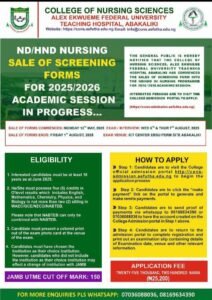
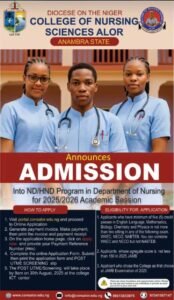





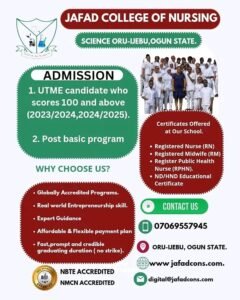















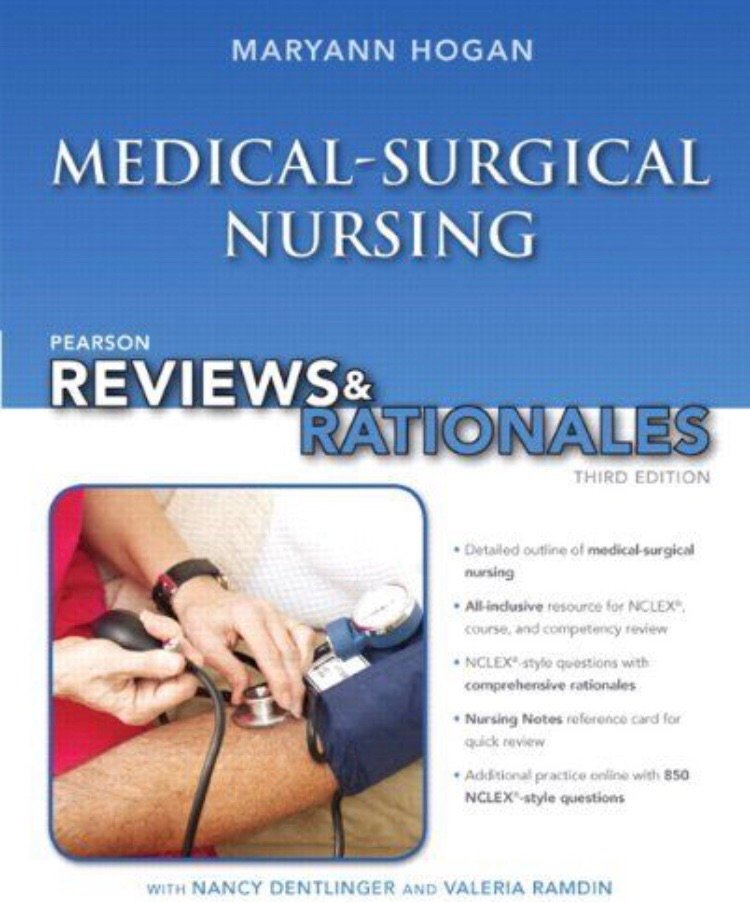



![RELEASE OF RESULTS OF THE PROFESSIONAL EXAMINATION IN MIDWIFERY, SEPTEMBER 2024.[UPDATED] RELEASE OF RESULTS OF THE PROFESSIONAL EXAMINATION IN MIDWIFERY, SEPTEMBER 2024.[UPDATED]](https://nursinginfo.com.ng/wp-content/uploads/2024/09/img_1789-1.jpg)









